

SHAWNEE MISSION EAST

7500 MISSION ROAD PRAIRIE VILLAGE, KS 66208
OCTOBER 13, 2025 VOLUME LXVIII ISSUE 4





SHAWNEE MISSION EAST

7500 MISSION ROAD PRAIRIE VILLAGE, KS 66208
OCTOBER 13, 2025 VOLUME LXVIII ISSUE 4






With Israel-Palestine peace conversations happening during the anniversary of the Oct. 7 attacks, late SM East alumni Sarah Milgrim’s legacy is remembered


OCTOBER 13, 2025


Read a story reviewing the new ice cream shop Clementine’s story by
EDITORS DESIGN
DESIGN EDITORS
PRINT EDITORS
Sophia Brockmeier
Libby Marsh STAFF PHOTOGRAPHERS
ONLINE EDITORS
Luciana Mendy
Lucy Stephens
ASST. PRINT EDITORS
Avni Bansal
Michael Yi
ASST. ONLINE EDITOR
Christopher Long
HEAD COPY EDITORS
Libby Marsh
Luciana Mendy
ASST. HEAD COPY
EDITOR
Grace Pei
PRINT PHOTO EDITOR
Paige Bean
Will Griffith
ASST. PHOTO EDITORS
Addie Clark
Molly Scott
Ava Towner
Tyler Russell
PHOTO MENTORS
Addie Clark
Katie Cook
Sylvie DeGalan
Zac Russell
VIDEO EDITORS
Preston Hooker
Emma Weidman
Bella Broce
Sydney Eck
ASST. DESIGN EDITORS
Evelyn Bagley
Lucy Swope
DESIGN MENTORS
Lyla Weeks
Miranda Liberda
Julia Campbell
Tillie Paisner
PAGE DESIGNERS
Madeline Glasier
Devon McFadden
Ella Slicker
Kennedy Moore
Eisley Foster
SECTION EDITORS EDITORIAL
Ashtyn Ingram
NEWS
Addy Newman
OPINION
Adyson Cooper
FEATURE
Julia Campbell
A&E
Tillie Paisner
SPORTS
Miranda Liberda
ART EDITOR
Francesca Lorusso
ASST. ART EDITOR
Julia Campbell
Annie Trenkle
Simon Shawver
Evelyn Geheb
Emma Weidman
Molly McDermed
Vivien Glenski
Anastasia Flower
Lexi Madden
Maggie Rogers
Layla Love
Sophia Cicero
Avra Welling
Darcy Kroening
Charlotte Walton
RJ Kordalski
MULTIMEDIA STAFF
Lexi Madden
Evelyn Gehab
Alex Harden
Avra Welling
EQUIPMENT MANAGER Will Griffith
STAFF ARTISTS
Preston Hooker
Adyson Cooper
Tillie Paisner
Ella Slicker
Eisley Foster
COPY EDITORS
Preston Hooker
Caroline Beal
Addy Newman
Mya Smith
SOCIAL MEDIA EDITORS
Bella Broce
Lucy Stephens
ASST. SOCIAL MEDIA EDITORS
Evelyn Bagley
Ashtyn Ingram
SOCIAL MEDIA STAFF
Ashtyn Ingram
Evelyn Bagley
Adyson Cooper
Madeline Glasier
Devon McFadden
Sydney Eck
Lyla Weeks
Lucy Swope
STAFF WRITERS
Vanessa Blades
Reese Dunham
Alex Harden
Sloane Henderson
Sienna Williams
Anya Hudson
Bridget Dean
Hannah Rosemann
Effie Roper

ME INSTA
Scan here to visit the Harbinger website with stories, multimedia, videos, photos and more
Scan here to visit the Harbinger Instagram account to view galleries, stories, videos and more

ADS MANAGERS
Preston Hooker
Molly McDermed
CIRCULATION MANAGER
Zac Russell
CONTEST COORDINATORS
Christopher Long
Tyler Russell
The Harbinger is a student run publication. Published editorials express the views of the Harbinger staff. Signed columns published in the Harbinger express the writer’s personal opinion. The content and opinions of the Harbinger do not represent the student body, faculty, administration or Shawnee Mission School District. The Harbinger will not share any unpublished content, but quotes material may be confirmed with the sources. The Harbinger encourages letters to the editors, but reserves the right to reject them for reasons including but not limited to lack of space, multiple letters of the same topic and personal attacks contained in the letter. The Harbinger will not edit content though letters may be edited for clarity, length or mechanics. Letters should be sent to room 400 or emailed to smeharbinger@gmail.com.
stories by ALEX HARDEN
The marching band is preparing for the annual Kansas Bandmasters Association competition on Oct. 18 SM East is hosting Voter to Voter on Oct. 14
THE ANNUAL KANSAS Bandmasters Association marching band competition is at Emporia State University on Oct. 18.
This is the fifth year SM East has qualified for the competition, and the marching band has been preparing since July.
“[The KBA] put together a marching championship competition and most of the bands in the metro area and across Kansas go,” SM East’s Director of Bands Alex Toepfer said. “It’s effectively our state championship.”
Drum major and senior Andrew Bennett has been in the SM East marching band for four years and attended KBA each year.
“We’re out [practicing], 7 a.m. every morning pretty much,” Bennett said. “And then we have rehearsals on Thursday nights, [and] we’re at all the football games.”
A lot of the preparation that’s done for the competition is designing the show, which usually involves deciding on a theme, teaching the band the music and making props.
“We start designing our show pretty much [right] after the last [show] gets over with,” Toepfer said.
The theme for the show this year is “Baroque’n Glass,” which is a mix of older Baroque music with newer compositions.
“It’s supposed to be how classical and very one-and-done type of style pieces [were] shattered by these newer influences,” Head drum major and senior Shubra Durgavathi said. “But they are still connected to one another because it’s all music, and you can always put it together, and there’s always connections between different forms of art and we’re putting all of that together on the field.”
SM East has the most amount of students with the seal of biliteracy in the district
S M EAST WAS named district leader in the number of students achieving a Seal of Biliteracy on Sept. 29, according to an Instagram post from @smeastlancers. As of Oct. 8, the Instagram post has been deleted.
The Seal of Biliteracy is an award given to students who are proficient in a second language, and can be acquired through either the Advanced Placement exam, International Baccalaureate exam or the Assessment of Performance toward Proficiency in Languages (AAPPL) test.
Senior Ishaan Home is taking the IB test for French and the AAPPL test for Bengali — the language he speaks at home — in hopes of helping him have a career in linguistics.
“I feel pretty comfortable [about the tests],” Home said. “I’m more stressed
about the French test than the Bengali test since I know [Bengali] better.”
The Seal of Biliteracy is now recognized by employers according to Foreign Languages Department Chair and French teacher Gina Baker.
“It’s a big resume builder and a student asked me this year, why should we get the seal biliteracy?” Baker said. Well, if you go out and you are trying to get a job and they want to hire that person that knows some Spanish or knows some French, that seal tells them your proficiency level.”
Principal Jason Peres was happy to hear of SM East’s accomplishment.
“I’m just proud of our school and our students and our world language teachers who really work towards that goal,” Peres said.
THE YOUTH AND Government club is hosting Voter to Voter for the first time on Oct. 14. Voter to Voter is an organization that focuses on voter outreach and promotes involvement in local and national elections.
The organization will come to SM East to talk to seniors about registering to vote and getting involved in voting.
“It’s essentially a way that provides information on how to get registered to vote and deadlines within that,” YAG secretary and senior Adeline Clifford said. “Essentially just to encourage seniors who are 18 to register and vote.”
The way they do the annual presentation has changed this year now that Voter to Voter is involved.
“Normally we just go to the senior
classrooms and do a presentation on how to register to vote during advisory, but this year we’re in touch with this new organization,” YAG president and senior Eliza King said.
YAG Senior Class Representative and senior Lucinda Hendrickson turned 18 this summer and is registered to vote.
“I know that a lot of my classmates who are also 18 haven’t registered to vote, just because they think the process is gonna be really complicated or they don’t think that it’s worth voting because they don’t think that they’re educated enough to vote,” Hendrickson said. “But I think it’s really important, so I’m excited to educate the rest of my peers.”
US government shut down
Protests
as Trump pushes to deploy the National Guard
marks two years since Oct. 7 attack

New PSAT/NMSQT prep sessions aim to boost student confidence and scores, with plans to develop further next year
story by AVNI BANSAL
four
45-minute tutoring sessions during late-start on Thursdays from Sept. 18 to Oct. 9, to prepare students for the upcoming Preliminary SAT/National Merit Scholarship Qualifying Test this Thursday.
Counselor and PSAT coordinator Susan Fritzemeier, Gifted Facilitator Mary Holsworth and math teacher Neeta Mandsager led the sessions. The sessions were offered to 60 juniors with the highest scores on the practice PSAT/NMSQT from sophomore year, according to Fritzemeier.
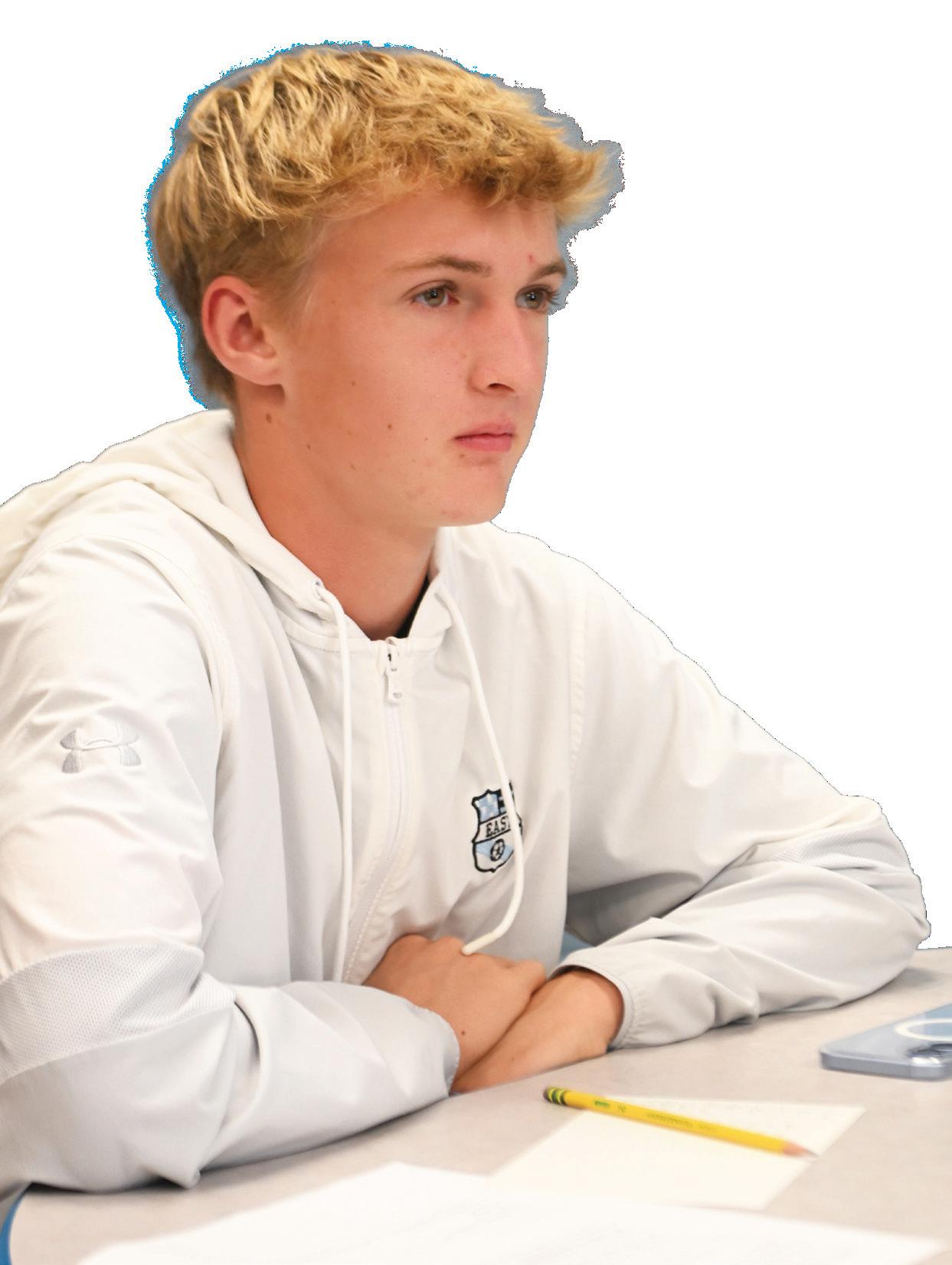
students as National Merit Semi-Finalists. Then, after achieving a comparable PSAT or ACT score and an additional application containing an essay, students become finalists.
kind of a pilot year [for the
Aiming to boost test readiness, principal Jason Peres modeled the sessions after other districts, such as Blue Valley, which, according to the Johnson County Post, had 51 National Merit Semi-Finalists this year compared to Shawnee Mission’s six.
“Our hope is that by doing these brief sessions, students will just be wiser with their testing practices and know some of the explicit content that they’re going to see,” Peres said. “In essence, it’s us giving them an opportunity to practice right
Scoring above a certain Selection Index — which varies based on the previous class in each state and is calculated by doubling the reading score, adding the math score and dividing by 10 — on the PSAT/NMSQT qualifies
Being both a semi-finalist and a finalist makes students eligible for certain college scholarships, and finalists are considered for a National Merit Scholarship award, according to the National Merit Scholarship Corporation. Other than being a semi-finalist or finalist, scoring in the 3-4% of testtakers qualifies students to be a National Merit Commended Scholar.
a
This year’s selection score for the graduating class of 2026 was 216, one to two points higher than the past four years, according to multiple articles by the Johnson County Post. “There are all these students at East who are really close, but just not in that top one-half of the 1%,” Fritzemeier said. “And this year is kind of a pilot year [for the tutoring sessions], like a little soft opening of a store, and we just wanted to get some resources out and provide a few prep sessions.”
Planning for the sessions was a collaborative effort, with Mandsager teaching the first two sessions, Fritzemeier teaching the third and Holsworth teaching the last.
Mandsager guided around 10 juniors through 30 math practice questions during the 45-minute classes, asking each student what strategy they used for every question and
how confident they were.
“I was really, really surprised, because [the students] were into it,” Mandsager said. “Most of them take practice tests and also study at night, which I don’t see in my regular teaching. It’s nice to see that with the PSAT, they really spend some time studying.”
Junior Halima Talbi attended three of the sessions and has been studying for the PSAT/NMSQT since July, taking SAT practice tests on Bluebook whenever she has a free day or evening. Since outside private tutoring has an average cost of $70 per hour according to Tutors.com, Talbi appreciated how the sessions were free and also enjoyed being taught by Mandsager, whom she had as a math teacher last year.
“I loved how open [the classes] were,” Talbi said. “We all could talk, and it didn’t feel like a classroom. It felt like we were all giving each other advice.”
As this is the first year East has offered these sessions, Fritzemeier plans to send out a Google form for students to give feedback. She wants to know if students would prefer the sessions during late start or in the evening, and if there are improvements that should be made.
Additionally, Fritzemeier would like to offer one to two more sessions next year and is considering applying for an East Fund grant to bring in an outside test-prep expert to teach the classes.
“We just want to keep doors open,” Fritzemeier said. “I really look at it from the perspective of, there are so many students achieving, especially at the 95th to 98th percentile here, and if we can just help people get that boost, then that’s our goal.”




All entries for the National PTA Reflections Art Contest are due on Oct. 23, giving students a chance to express their creativity through the theme, “I Belong!”
THE NATIONAL PARENT Teacher Association Reflections Art Contest is currently accepting entries from all students across the country to submit artwork exploring this year’s theme, “I Belong!” with entries due on Oct. 23.
Each year, the 50-year-old contest has a theme chosen by any student from elementary to high school, and students in the same grades can create and submit art in six categories — music composition, dance choreography, film production, photography, visual arts and literature.
“It’s just an amazing way to share your thoughts and ideas, if words don’t come as naturally to you,” previous award-winner and sophomore Carmen Carroll said.
SM East is one of the four high schools in the district participating this year. Students can submit their artworks to East PTA Reflections Chair Dee Wright in the office for a chance to win.
The first-place winners from each local school move on to be judged at the district level. Judges then place district winners based on the Award of Excellence, which is first place, Award of Merit and an Honorable Mention. The District Award of Excellence winners then advance to the state level, where judges choose around 850 first-place winners at state to move on to nationals, where there are over 200 winners.
For the district-level Award of Excellence winners, the PTA will hold an awards ceremony at the Center for Academic Achievement in front of the
A few of the pieces by sophomore Carmen Carroll, that have won the Reflections Contest in the past
SMSD Board of Education, where the winners will receive a medal, certificate and a journal — a difference from prior years when they only gave out a certificate.
“It’s a beautiful ceremony, and I’m very proud of it,” Wright said. “And I was brought in to improve the program, and I hope that it has [improved].”
Since former district chair Lori Stanziola left last year, Wright serves as the interim district chair until she can find a new community member or parent interested in the arts to keep the program going.
Each year, the contest has given Carroll the opportunity to express herself through the different themes. This year, Carroll has ideas for an art piece — black and white pencil drawing displaying her and others’ thoughts about her — based on her feeling of unbelonging during previous Reflections award ceremonies.
“I know this is where I should be, or I know this is where I’m supposed to be, but in my mind, I’m like, ‘Should I be here?’” Carroll said. “‘What do the people around me think? Am I qualified to be here?’”
Sophomore Chloe Caldwell also plans to enter the contest, but she’ll be focused more on the community aspect of the theme. She has ideas for a sculpture of the Earth with people holding hands to create a sense of belonging.
“A big part of belonging is like human connection and having friends,” Caldwell said. “So I think in ord er to belong, you need to have people to belong to.”
While everyone has their own interpretation of the theme, the National





PTA uses this year’s theme as a way for families to discuss what it means to belong and why belonging is important, according to the National PTA.
“You just realize how everyone can interpret the theme differently, and how everyone has their own troubles and their own thoughts going on,” said arts ambassador for the SM Council PTA and East alumni Campbell Wood. “But everyone can find a way to look at a theme and see themselves in [it]. And I think that’s the beautiful thing about the arts.”
After entering the writing category for the Reflections contest every year from middle to high school, Wood continues to make promotional videos as a PTA ambassador about how the contest impacted her life.
“I think it reminds me, being an ambassador, how grateful I am for having the writing contest, and how much good [it] did in my life,” Wood said. “[It’s] truly, probably the reason I am pursuing writing and why I have fallen so far in love with poetry.”
In addition to asking Wood to make promotional videos, Wright has sent information to art teachers and set up a table at lunches to advertise the contest, hoping to see participation increase from an average of five East entries each year.
Despite the low participation and having her last child graduate East six years ago, she continues




as the PTA Reflections chair because of her passion for the arts and their impact on students, like Wood.
“[The contest was] this huge outlet in my life, and it’s just made me a better person and more grounded in who I am and my relationships with others and how I view the world,” Wood said. “And I think I wouldn’t have had that without these contests.”
The six categories that students can make and submit art for in the contest
DANCE CHOREOGRAPHY


PHOTOGRAPHY







Seniors Sylvie Willard and Annabelle Simmons host Coloring Book Club meetings every Wednesday after school in English teacher Ann
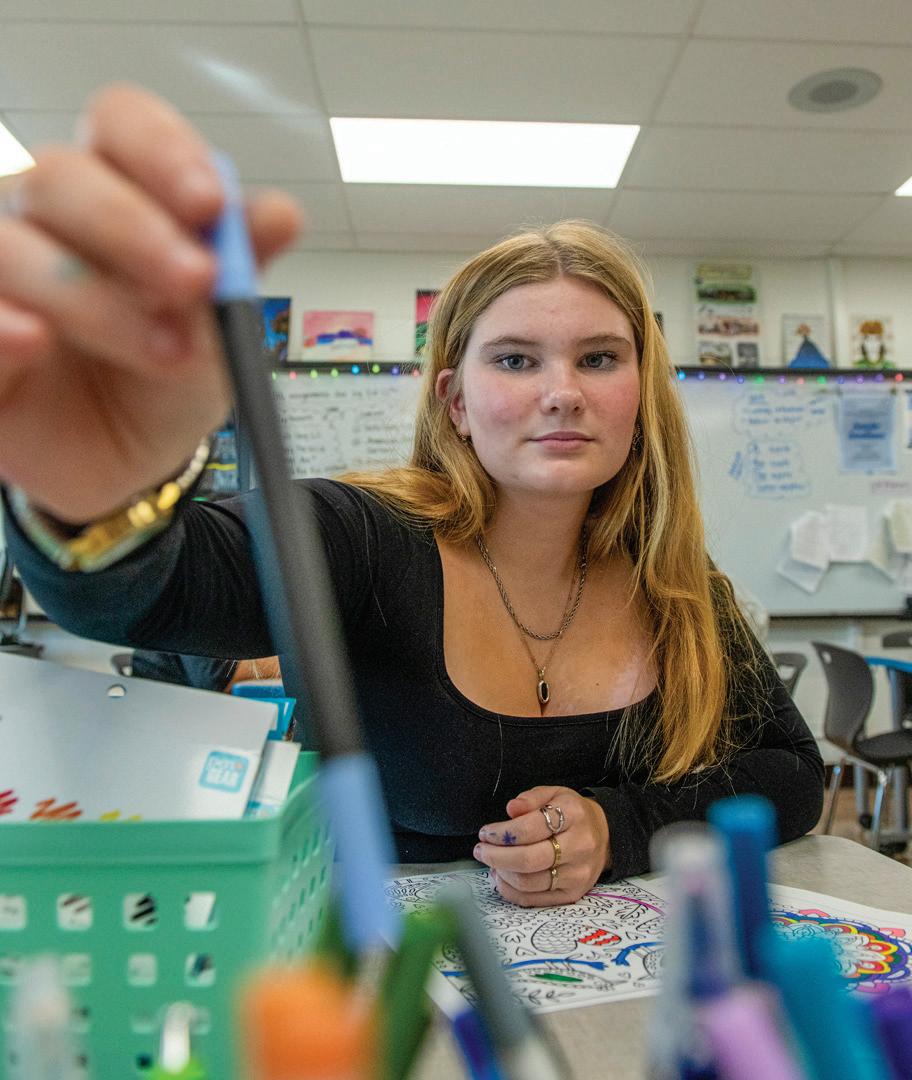
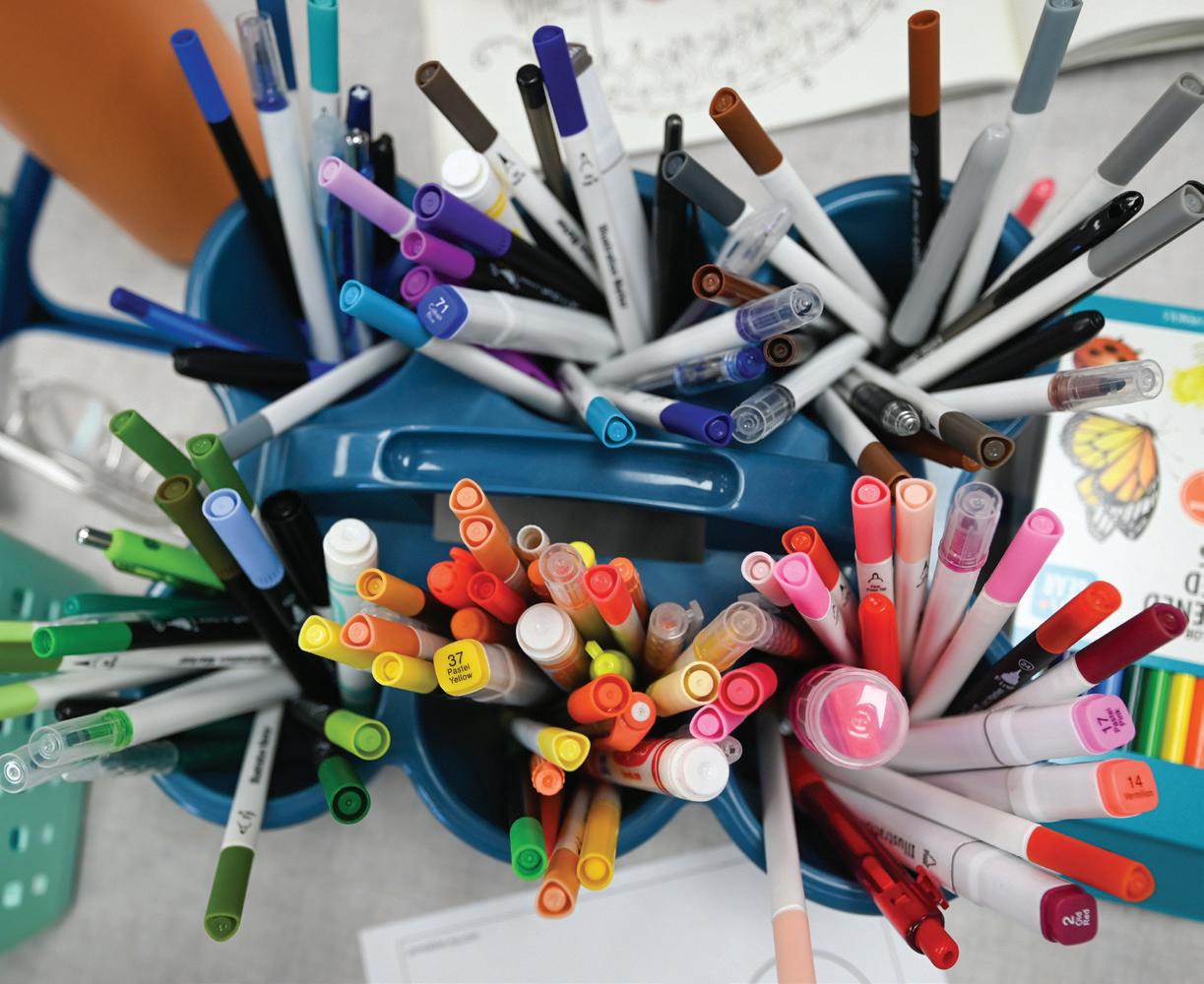
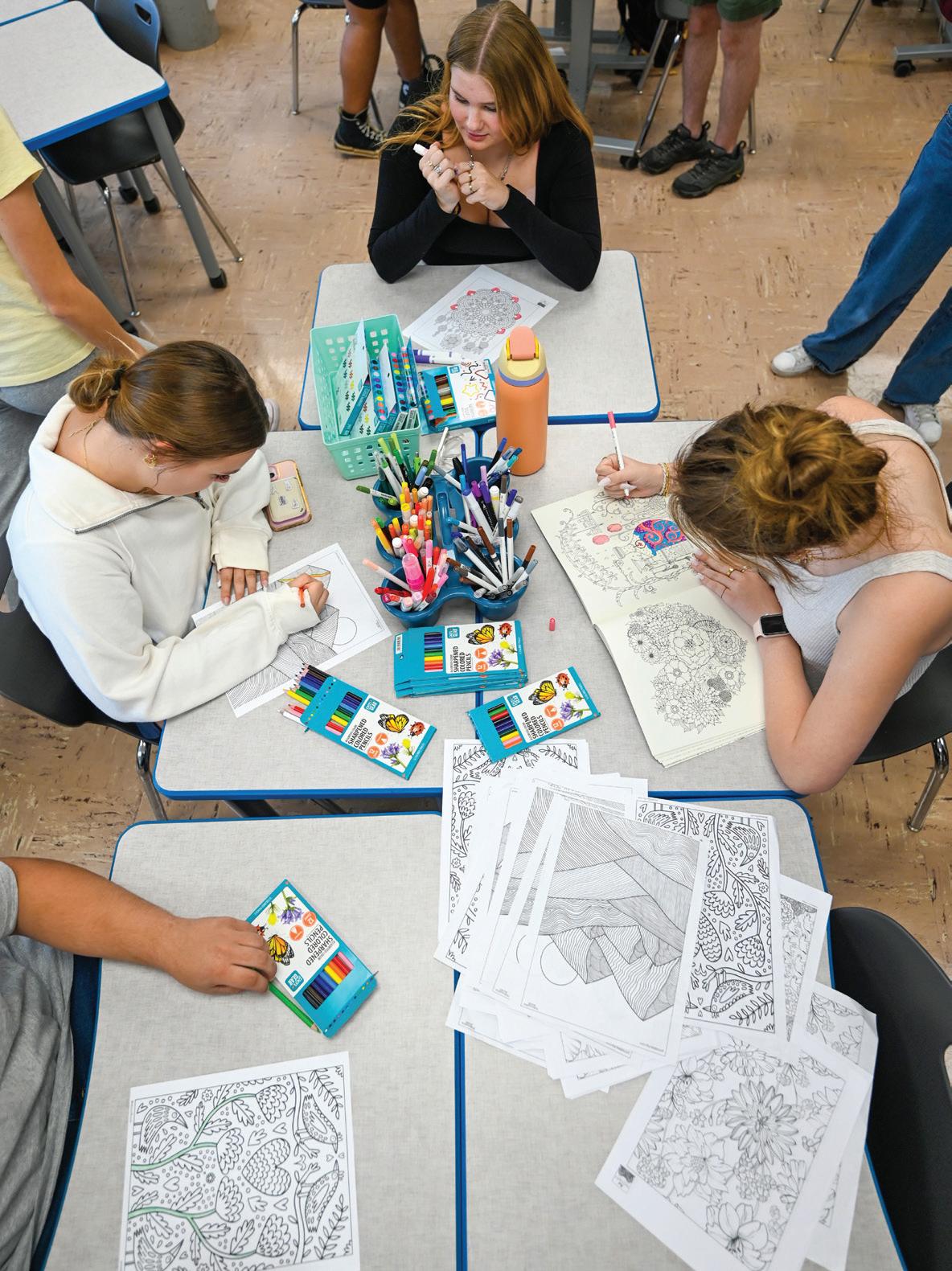
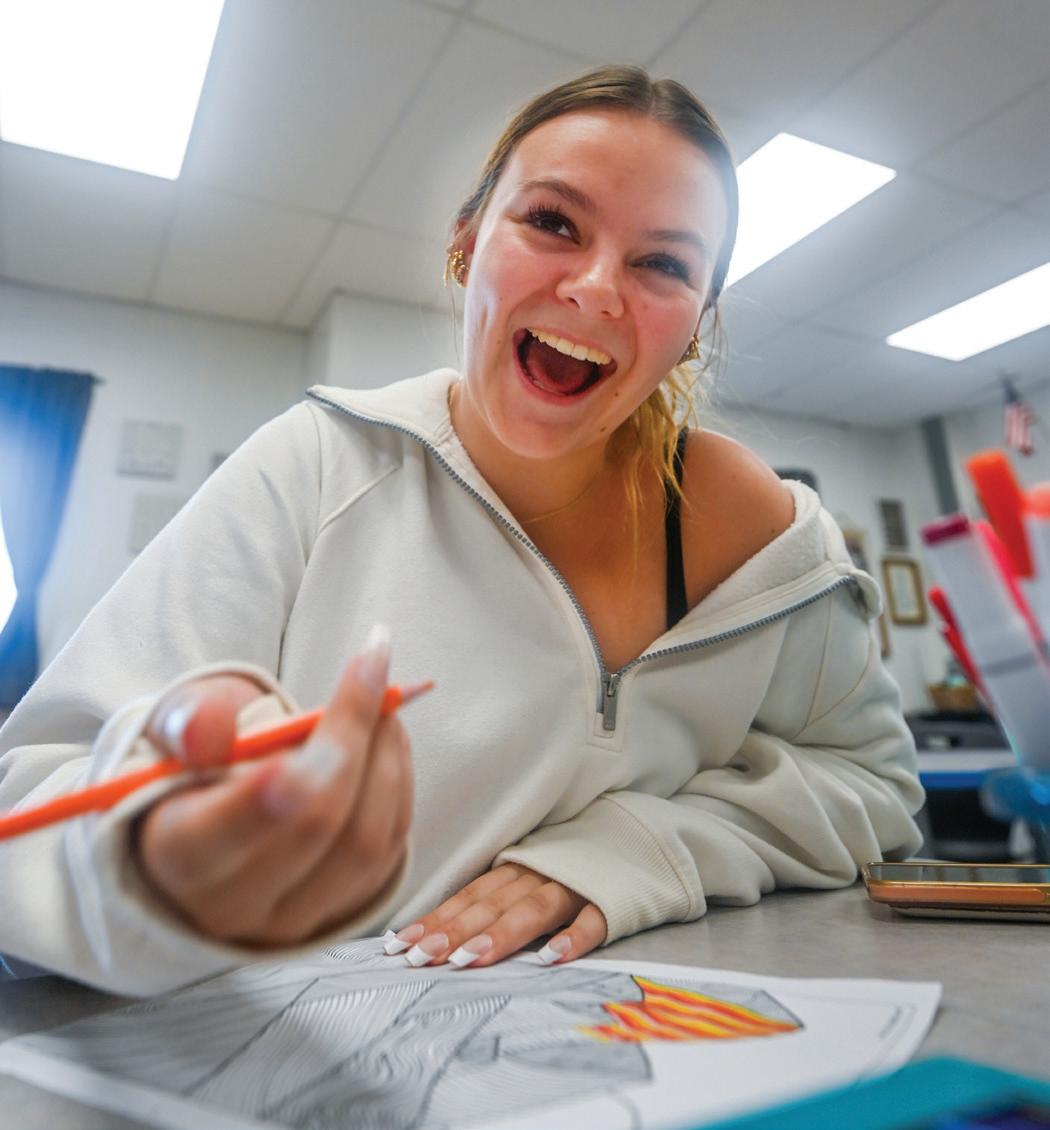
were laughing because it was the first meeting, and only seven people showed up,” Willard said. “And we were just giggling, because it was such a [funny] moment.”

Opinionated tweets from the past week about the government shut down
THE GOVERNMENT IS shut down because Trump and the Republicans are hellbent on taking health care away from you. And they won’t even come to the table to talk to us about it. This is not about politics. It’s about
Why pumpkin patches are overrated and are the not best fall activity
THE HUNDREDS OF people running around to pick the perfect pumpkin, the wild kids jumping and screaming and the long wait times for hay bale rides and mazes aren’t worth it to me.
The admission price for one person at the Johnson County Farm is $20, which may sound inexpensive, but you also have to pay for any food, and pumpkins you purchase. You also have to pay for any activities you choose to do, like the maze or a hayride. Once you total up all of these, it makes it brutal to spend so
much on a pumpkin. You could get the same pumpkin from the grocery store for $5 without trudging through a field for a pumpkin covered in dirt.
When I was 7 years old, the best part of the pumpkin patch was getting my first fresh, hot apple cider donut of the season, but now they have the same brand at every local super market, taking away the magic of these delicious donuts.
The pit of corn kernels is disgusting. Not only is it dirty, but everyone is throwing corn around. Even if you manage to avoid getting pelted by flying kernels, you still end up bringing home
REPUBLICANS ARE ABOUT to vote (again) to reopen the government and every Democrat outside of a few sensible moderates will vote to keep it shut. This is the basic fact of the showdown, and no one can deny it.
half the corn with you in your shoes and clothes.
The crowds also make it hard to enjoy your experience; it’s chaos disguised as charm. This simple fall experience has turned into a hectic mess. The lines are very long, whether it’s for food or activities. Sometimes the wait can be 30 minutes, and if it’s a particularly popular activity, like the hay bale rides, you may have to wait up to an hour.
Many people visit the pumpkin patch to take cute pictures, hoping to capture a scenic fall background. However, the pictures are usually disappointing – either you’re covered in dust from
trekking through a corn maze or your hair has blown wild from the wind. The photos never turn out as great as you hope.
There are so many better and cheaper alternatives to have fun in the fall. I would rather watch a scary movie with all my friends. So go ahead and save your money. Buy grocery store cider donuts and a pumpkin to carve instead.
The members of the editorial board who agree with the viewpoint of the editorial are represented by for, and those who disagree with the viewpoint are represented by against.
SM East should add a college advising position to support college preparation
*Names are fictitious
SENIOR *SALLY SUE has her eyes set on Stanford University.
With a harrowing 4% acceptance rate, according to U.S. News & World Report, and eight supplemental essays, she’s overwhelmed with all the requirements to apply — she has to get them all near perfection just to stand a chance against 60,000 other applicants.
Sally makes an appointment with her counselor asking for a recommendation letter, and to her relief, they agree.
But this is the first time Sally has even laid eyes on her counselor, let alone had a one-on-one conversation with them. Now, the counselor is tasked with writing yet another recommendation letter, on top of their existing 20, going into Sally’s already difficult application.
And, the lack of in-person contact isn’t the counselor’s fault.
SM East needs to add a counselor advising position to support college preparation and create more personal relationships.
The position of a college advisor isn’t a far-off fantasy for East. In fact, every other Shawnee Mission School District high school has one specific college advisor, according to their school websites.
College advisors at schools such as SM Northwest, according to smnw. com, meet with students to discuss their post-high school goals — including college, the workforce or the military — and develop plans to reach them.
A counselor, on the other hand, prepares and maintains files involving general administrative and confidential information, according to the Shawnee Mission School District job description.
Although the addition of a college advising position would make over 400 students’ course loads fall on one individual, they wouldn’t be from differing grade levels.
Currently, the Class of 2026 needs
help with its college applications. But, there are simply not enough hours in the day, or more realistically, counselors on the fourth floor, to answer the individual questions from over 450 seniors.
Because of this, students like Sally are stressed.
They’re stressed because of scholarships. Stressed because of letters of recommendation. Stressed because of the lack of contact with their counselors.
But it’s not directly the counselor’s fault, they’re also facing three other grade levels that have problems other than college applications.
It’s simply too much for a person to handle.
To expect counselors to dedicate enough time for emails and conversations with every senior in their designated section is unreasonable. Not to mention write a letter of recommendation to persuade admissions offices.
But with the added advisor position, Sally’s dreams of Stanford would be one step closer to reality.
And it’s not just the students that are affected by the lack of a college advisor — parents are too.
When a student needs a letter of recommendation from the counselor for a college or university, the parent must fill out a Google Form detailing their child’s strongest moments. Although the form is accessible and intuitive, the hardest part is actually finding the form.
Although they can sign into a parent Canvas account and access the Student Services page that way, it’s many extra steps that could be easily solved with a quick email sent to a college-specific counselor.
Having a college advisor at East would allow all students, like Sally, to build connections with the advisor. Students would be able to have meetings with the advisor more often than their singular assigned counselor.
In these personal meetings, students would learn about scholarship opportunities and resumé building activities — aspects of an application that can’t be learned from a two-minute YouTube video.
Even more, the college advisor would be able to avoid slideshow presentations half-heartedly given by seminar teachers during the 35-minute advisory period on Thursdays.
Let’s be honest, no burnt-out, sleepdeprived senior is studiously taking notes over such presentations.
Instead, these presentations could be given to small groups of students. Or even better, individually to each college applicant.
So, for the sake of students and counselors alike, let’s provide more college advising support.
What counselors do for students at SM East in their every day life
*According to the American School Counselor Association

design by DEVON MCFADDEN
by ZAC RUSSELL
story by LUCIANA MENDY
DON’T STRESS SO much, you’ll be fine, you have good grades.” It takes everything for me not to roll my eyes at those words. This is how almost all of my conversations about college go with adults — whether it’s teachers, parents or other family members.
The conversation always starts with a simple question about what colleges I’m interested in or what major I plan on pursuing. Inevitably, the interaction boils down to the applications and my concerns about requirements, deadlines and being a competitive applicant.
Then I get some Master Yoda-level advice about how I’ll be fine and not to think about it too much.
For some reason, adults in their infinite wisdom seem to think the only thing a student needs to get into a decent college is good grades and an extracurricular here and there. But now you need unique extracurriculars, stellar recommendations and various work experiences.
Adults, whether it’s parents or just family friends, are often out of touch with the rigor and competitiveness of college applications, causing them to be dismissive of students’ concerns and making the process more stressful.
While parents and other adults in a student’s life can give good college advice at times, it’s been decades since they personally
went through the application process. It has gotten so much more competitive than in the 1970s. What once worked for them just doesn’t cut it anymore.
For one, more people are applying. From 1992 to 2004, the number of applicants to four-year colleges grew from 1.19 million to 1.71 million students, an increase of 44%, according to the Journal of Economic Perspectives. As a result, students are now competing against a larger pool of applicants for limited spots.
And not only are there more people students have to compete with, but the expectations from college admissions feel so much higher than they were for baby boomers, Gen X and even older millennials.
Acceptance rates at the top 50 most selective schools fell from 35.9% in 2006 to as low as 4.39% last year. Those trends only seem to be accelerating because schools aren’t adapting to an increase in population, according to The College Investor.
To get into competitive schools, straight A’s are now the bare minimum. And forget about just having a decent SAT score; you need to have an amazing score, since the median SAT scores for 68% of schools have increased by 100 points or more since 1985. And while extracurriculars, leadership roles and
Don’t worry about extracurriculars honey! Your grades are enough.
Adults are unaware of the competitiveness of college applications, making the process more stressful for students
community service were bonus points once, they’re almost necessities now.
Students must have a portfolio that includes national awards, research internships and multiple strong recommendation letters—something that was rarely needed for past generations.
Obviously, not all schools have a rigorous application process, so it’s not always necessary to stress about it. But even if a school is easier to get into, students still have to compete for things like merit scholarships.
Plus, if there’s one thing that has been shoved down the throats of students since the end of junior year, it’s that they need to “stand out” to colleges. But adults fail to realize what activities and aspects actually stand out to colleges these days.
Adults may say that taking Advanced Placement classes makes you stand out, but taking AP classes doesn’t have the same impact because while only about 5000 schools had AP classes in 1980, more than 80% of high schools in the US offer more than five AP classes, according to the AP website. Which is great for accessible education, but it makes standing out so much harder.
thing that has been shoved down the throats of students since the end of junior year, it’s that they need to “stand out” to colleges.
Being a student athlete used to show that you could balance work while juggling two-hour daily practices, but at SM East, more than half of the student body are studentathletes. Being part of organizations like the National Honor Society may seem like it would garner the attention of colleges, but according to the NHS website, there are more than 1.4 million students in the program.

The work I did for the NHS program, from maintaining a GPA of 3.65 or higher, hours of volunteering, and showing leadership in my classes, means nothing due to the number of students in the program.
So when adults tell students that they shouldn’t stress about their college applications without considering it from a modern-day perspective, it’s dismissive of the challenges the student is facing and the work they have to put into their application.
This makes it hard for students to rely on adults in their lives during this intense year, since they know adults don’t fully understand the anxiety and pressure of current college applications.
Adults who have a kid in their life, whether they are a family member, friend or student, who’s in high school and preparing to apply to college, should take the time to do research about what colleges are looking for these days.
And although students do need reassurance that they’ll do well when applying for college, it can come across as dismissive. The most important thing they need is support and someone to lean on during one of the most stressful times of their life.
Student extracurricular involvement in the U.S., according to an Instagram poll of 273 students
1.4 million members of NHS 85% of students play a sport 35.7% of students have taken an AP exam
To understand and address our school’s racial issues, we need to analyze its causes and then apply new curriculum
story by MICHAEL YI
AMONTH AGO, the “East_ isBeast” Instagram account — a student-run school spirit page with more than 700 followers — posted a racial attack on Hispanic families at a soccer game, encouraging fans to call Immigration and Customs Enforcement on SM West attendees. As later shared by West students in the first Youth Equity Stewardship meeting of the year, several families immediately left the game, fearing for their safety.
In the following week, I saw a surge of momentum from several SM East clubs condemning the situation in dozens of social media statements, resulting in the removal of the account.
It’s great to see the amount of energy our school can channel against these kinds of hateful acts. But was the page taken down because a student — still anonymous and enrolled at our school — felt remorse and realized their hateful actions could potentially shatter families?
More likely, that the student who deleted the account was motivated purely by the fear of academic and legal repercussions. And so, although the account is gone, the damage remains and the East community is no less discriminatory.
The problem is that we only address the crisis of racism at our school through patching up the extreme symptoms: racial assaults in the hallways, online threats at soccer games. We fail to consider the gradual causes of the issue — the thousand ways in which our students are, year after year, not taught how to empathize in a country still fraught with violent, corrosive racism.
Our school is more than 83% white, according to Niche.
On top of that, a great portion of our student body is deeply intertwined with country club culture, from Carriage Club to Milburn to Indian Hills — environments where kids lack opportunities to socialize with different races or economic backgrounds.
demographic that’s willing to accept and even make light of these incidents — including the hundreds of students and parents who had been following “East is Beast.”
It was almost certainly not a fortified belief in racial superiority and the necessary deportation of Hispanic families that caused the student a month ago to press “post.”
To them, it was a joke.
THE PROBLEM
is that we only address the crisis of racism at our school through patching up the extreme symptoms: racial assaults in the hallways, online threats at soccer games.
It’s all too easy for kids growing up in their predominantly white school and even more homogenous country club to never internalize the reality of modern racial struggles. That’s what East is seeing when our kids reach high school, in our classrooms full of microaggressions and stereotyping.
It’s this fundamental lack of diverse perspectives that not only allows for extreme incidents like the Instagram post, but raises a broad
can be just as bruising to our community as thrown fists.
A demographic that is born and raised never understanding the damaging effects of racism is a much harder demon for our administration to slay. It requires more than halfhearted slideshows presented during seminar on famous minorities from Wikipedia.
And a joke is not some isolated thing, some spurof-the-moment impulse that reflects nothing about our own experiences. What we share as comedy, what we expect to garner laughs, are things that have made our peers laugh in the past.
This post isn’t the result of a single student’s hateful worldview — it’s the product of a broad portion of our community that has never learned the harm of the worldviews it fosters.

Many of us were willing to condemn the racial assault two years ago in the hallways. But we forget that the other problem is that when a walkout was staged and the Harbinger livestreamed it on Instagram, our student body was making racial jokes about a walkout staged for a girl that was beaten.
Crime rates down at the school. Chocolate people going crazy. Three-fifths of the school showed up. These comments, comments that collected dozens of likes,
And as much as I support the Y.E.S. initiative, which holds conferences for student leaders to plan action against injustice, it can only do so much as a program that only reaches out to the subset of students already most mindful about race.
To combat the unique challenges our school faces, we need to add new elements to our core curriculum that all of East’s students will participate in. In our history and English classes, we should integrate analysis of critical race theory throughout the curriculum: the history of redlining, legislative discrimination, denied loans and deferred promises.
But as we’re integrating that learning, we need to keep an emphasis on the present and the local. Too many of our students hold the assumption — based on their upbringing — that we are in some post-racial America. We are not, and currently may be walking backwards.
Curriculum change may be hard for our school because the country, state and district don’t mandate it. But bigotry has its roots in ignorance. As a place of learning, we need to be doing more than applying reactive band-aids when students commit hate crimes — aren’t we supposed to be teaching them better?
A student’s perspective on how the administration deals with race
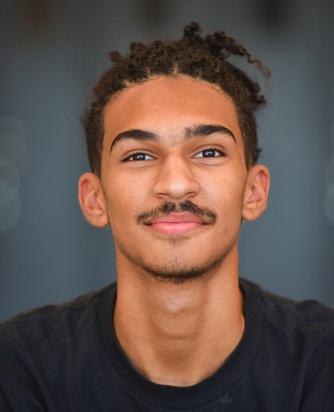
IT’S SO CRUCIAL for people to be learning history because, if you don’t learn history, we’re condemned to repeat it. And I think we’re seeing that cycle through, and the future generations probably aren’t going to get as much of an education.
E S L B H S C U
A breakdown of chess club’s schedule, activities and games
- meets every Monday in the library from 3-4 p.m.
- club members rotate every 10 minutes to play other members during their brackets
- play against SM South once or twice a semester
- hold tournaments once a quarter for SM East only
How their quarterly tournaments called “brackets” are set up and the trophy they win

“Usually, we have about 15 to 20 people, and we use the chess boards that are purchased by East. Then we play games for like an hour. The average meeting [is] pretty casual. But then we also have brackets in between for just East kids.”
President and senior Lucinda Hendrickson answers questions about the club WINNER’S BRACKET

“Those are a little more serious. They’re like, 10 minute timed [game rotations], and then we have medals and stuff for the winners. There’s an online app, like a chess timer, that times the game so that the players only have a certain amount of time to complete their moves, so that determines the winner.”

“For the people who don’t know how to play chess, typically, Mr. Burrows will sit down and help them. Or me and the Vice President Hank Dodderidge can. I know this year, we got a couple kids who didn’t know how to play at first, and so we put them together, and they kind of learn along the way. So we just try to, like have them play kids that will match their skill level.”












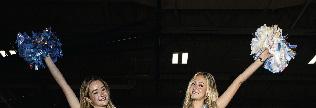















A look inside student life during the past two weeks
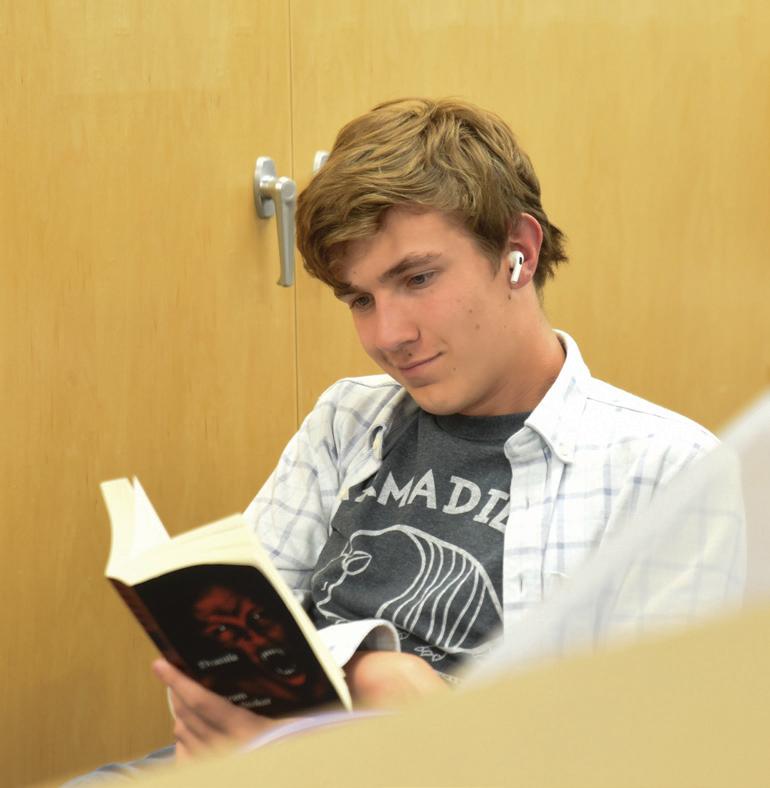
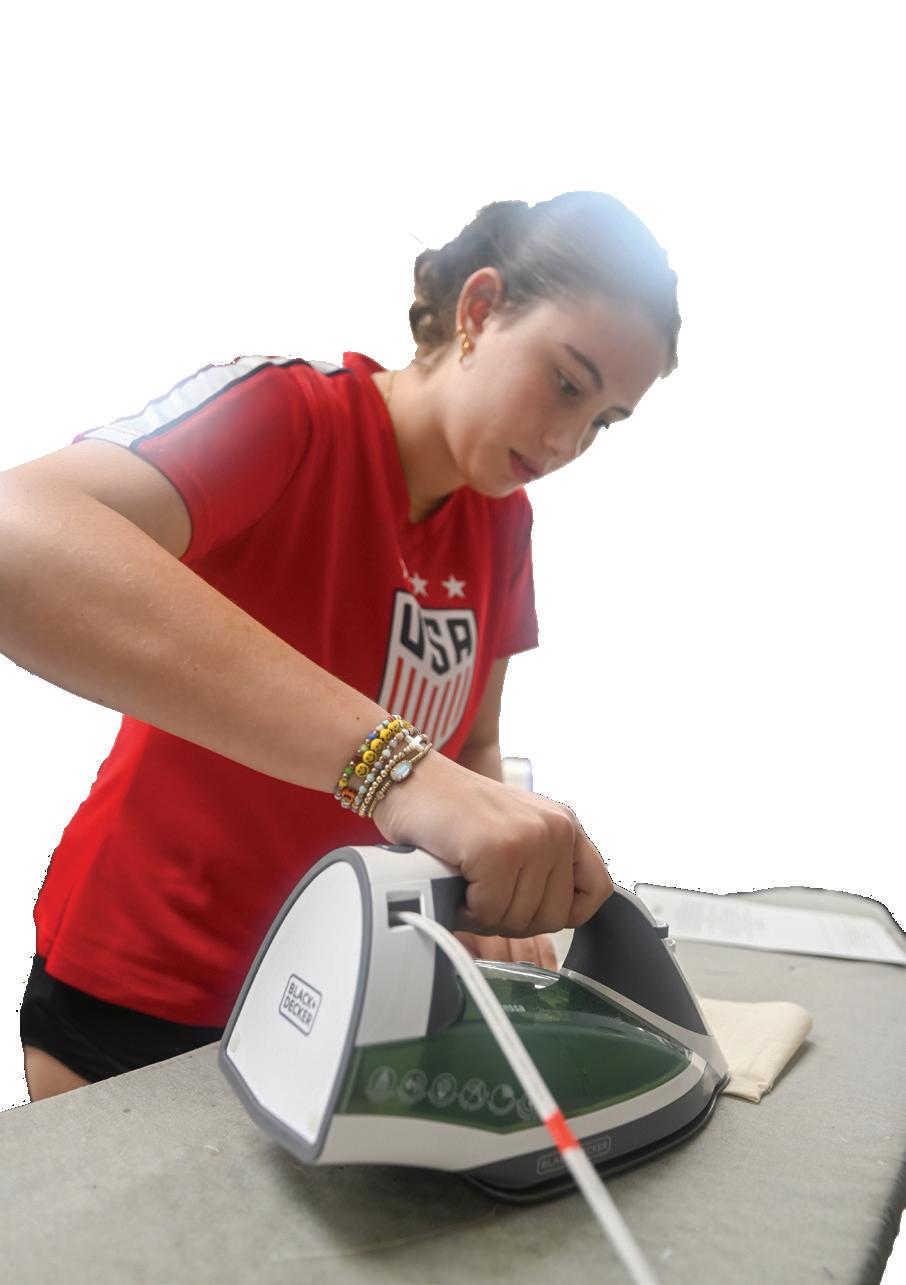
Learn about junior Burt Sheets’s curb spraypainting business and process
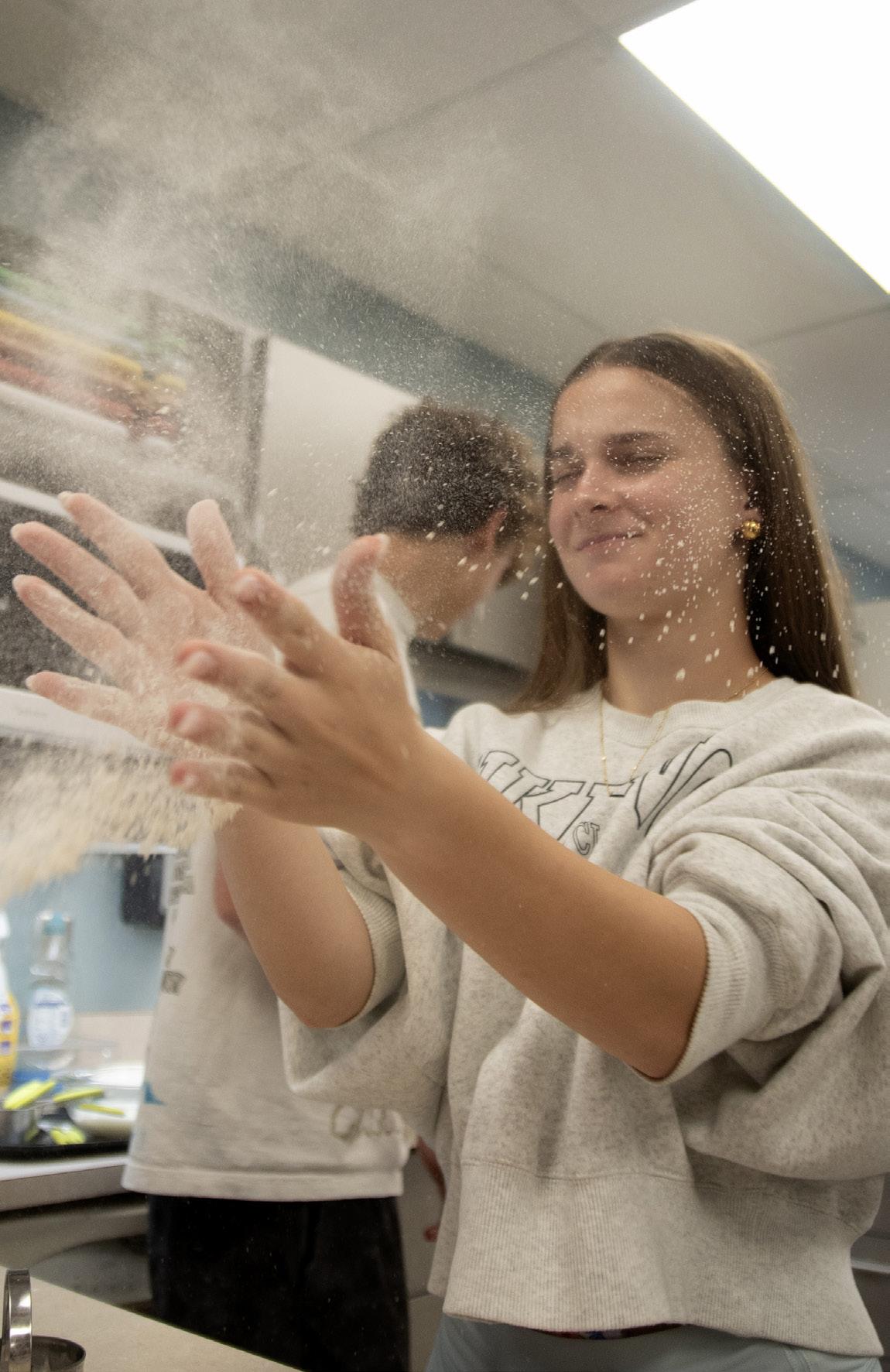

Junior Coco Reiser’s mom, Carrie Reiser, runs their dog’s Instagram account, @pennythepugkc
The account is used to capture cute and funny videos and pictures of Penny
A special feature of the account is “Friday Friends,” an Instagram highlight collection of Penny with different people on Fridays
Carrie adds fun related music to her content in hopes of making people laugh or smile
Mrs. Reiser describes Penny as a “Cuddly, spunky, and loyal companion”




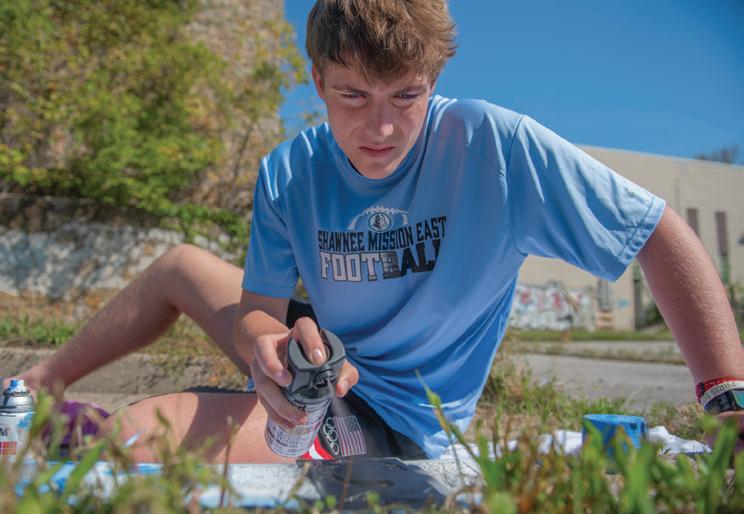




Designs and laser cuts his own stencils
Uses a wire brush, spray paint of assorted colors, stencils, tape and sandpaper
Has painted around 50 curbs so far
Paints curbs with addresses and designs
His most common request is to paint the K-State logo
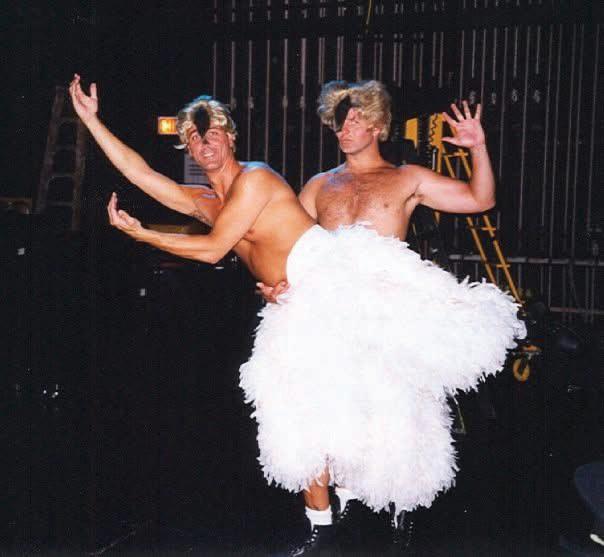
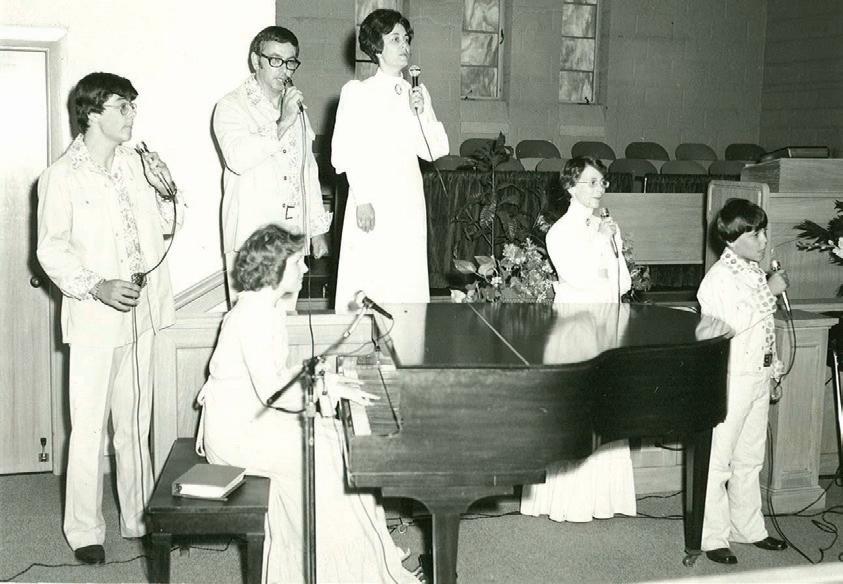
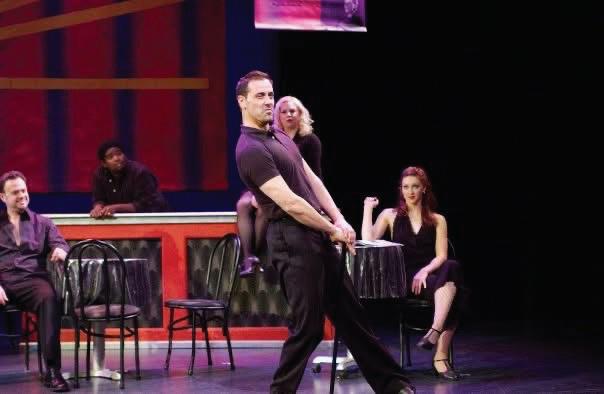

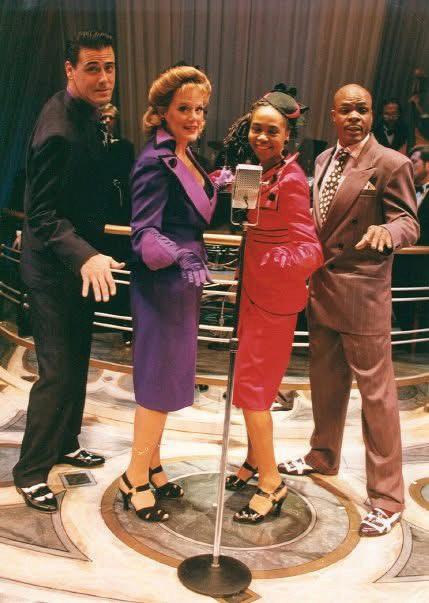
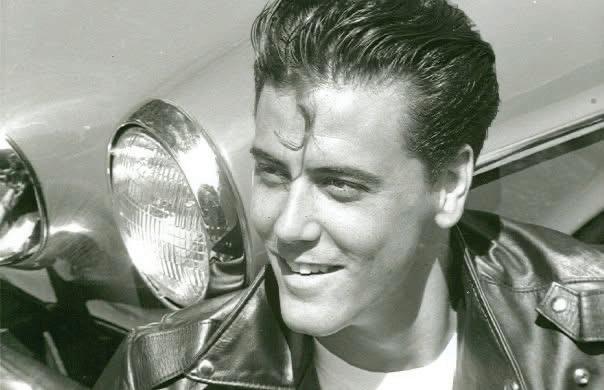
*Photos courtesy of Brian Miller

Brian Miller’s most memorable roles
Phantom - Raul
Beauty and the Beast - Gaston
Return to the Forbidden PlanetCaptain Tempest
JC Superstar - Pontius Pilate
Maybe Baby it’s You - All male roles
Assistant tennis coach Brian Miller was a theater actor for 20 years before coaching tennis and teaching math
OACHING TENNIS IS about analyzing problems on the court and finding solutions. In high school tennis, this means finding an optimal way to organize the best six players in pursuit of a state championship.
After winning six state titles in 11 years of coaching, assistant boys and girls tennis coach Brian Miller has
As an actor, on stage, formulas guide Brian towards how to light a scene, the proper notes to stress in a singing duet or his blocking directions throughout the show. Brian is the king of contrasts, working as an actor and a tennis coach. But to him, these jobs are more similar than they’re different. Each one with its own formula, united by problem-solving.
“I’ve always had kind of a split brain,” Brian said. “And to me, [theater, teaching and coaching] is all very, very similar. There are little moments of brightness, in pretty much everything you do. Finding those [moments] in theater helped me find them in every
Theater has always been the biggest part of Brian’s life — part of high school, college. And even most of his childhood after weekends of traveling with his family in their ‘70s Woodland Green Ford Econoline Van to sing gospel at local churches.
But Brian didn’t think he’d become a professional actor until the Wichita Center of Performing Arts theater director Joni McNeill decided to attend the 9 a.m. service at Derby Immanuel Baptist Church and saw Brian sing.
Brian had been working on his master’s degree in education at Friends University while simultaneously working a desk job at PEP Systems when McNeill
approached him with an opportunity. If he dressed in a leather jacket with jeans and sang “Love Me Tender” by Elvis Presley for the other directors, he would have a job playing the lead in the musical ‘Bye Bye Birdie’ at the Wichita Center for the Performing Arts for the next two months.
For the next 20 years, Brian had different shows lined up all across the country and the world, in places like Argentina, Australia and England.
“One time I got a call in the airport because I just finished a show, and the producer that was supposed to do a different show had broken his leg,” Brian said. “So they were like, ‘Brian Miller, please pick up the white courtesy phone.’ She’s like, ‘we need you.’ And I’m like, ‘Awesome, cool. I’ll be there. Give me a second. I’ll change my flights right now.’”
dark-stained wood seats. Both have acted in high school shows as well as performing in choir.
“I think it’s been a cool atmosphere for them to grow up in and to just see you don’t have to fit a certain mold in order to love theater or be good at it,” Leah said. “And I think that has affected our kids. They’re like, ‘Oh yeah, I can love engineering and also want to act.’ ‘Or, I can love drawing and also want to go and perform.’”
I’VE ALWAYS had kind of a split brain, And to me, [theater, teaching and coaching] is all very, very similar. There are little moments of brightness, in pretty much everything you do. Finding those [moments] in theater helped me find them in every moment.
BRIAN MILLER TENNIS COACH
Miller’s constant travel eventually brought him back near his hometown to perform the musical “Les Cage aux Folles” in the Mary Jane Teal Theater in Wichita, Kansas. It was this show where he met Leah Miller, his future wife.
After starting rehearsals and getting to know each other, they both found it rare to find someone in the theater world who’s interested in sports. A quick bonding point became their shared love of football — despite her support for the Colts and his for the Cowboys.
When watching one of his shows, Leah explained that she’s more nervous than he is because she sees his acting process behind the scenes. Before a show even starts, Leah often helps him run lines or gives him feedback.
Their kids, Jonah and Brilee, spent much of their childhood running between rows of velvet and
On the tennis court, Brian is known as the “chill” coach who finds a way to make every practice fun and entertaining, according to freshman varsity tennis player Molly Trenkle.
“I was director of the sound crew and lighting crew at St. Paul’s for the past three years,” Trenkle said. “And it just adds an element where I kind of relate to him more and it feels more like we’re kind of connected.”
Sports can make someone obsessed with the results, but for Brian, tennis is a lot more about honing the craft and finding those moments of brightness.
Very few people know about his acting side. But those who do respect the success Brian has had in an industry where actors only work 23 weeks out of the year, according to Brian.
“People are like, ‘Oh, you didn’t make it to Broadway, you didn’t get movies,’ but I was a working actor for 20 years, and there’s not many people who get to say that,” Miller said. “I’m from a small farm in the middle of Kansas, for goodness sake. I got to see the world. I’ve performed in London. I performed in South America. I am just overwhelmed with the things I have gotten to see and do because I can sing and act.”

The Pep Club paid for 60 students to ride to Lawrence High School on Oct. 3
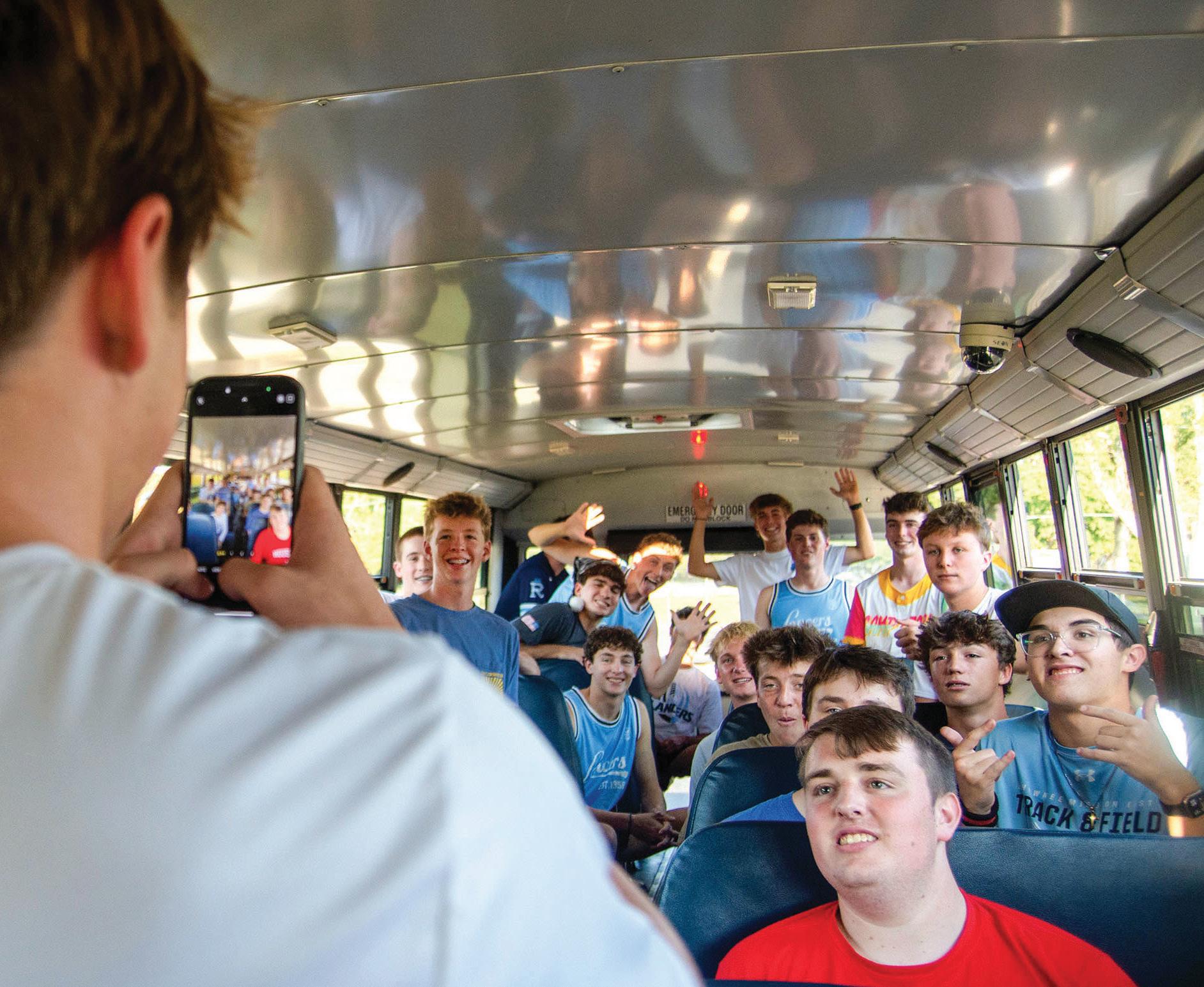
Junior Fritz
and plays
“It was so much fun to be with a bunch of different guys that you aren’t usually with on a long car ride,” Kostner said. “We also played Shabooya Role Call.”

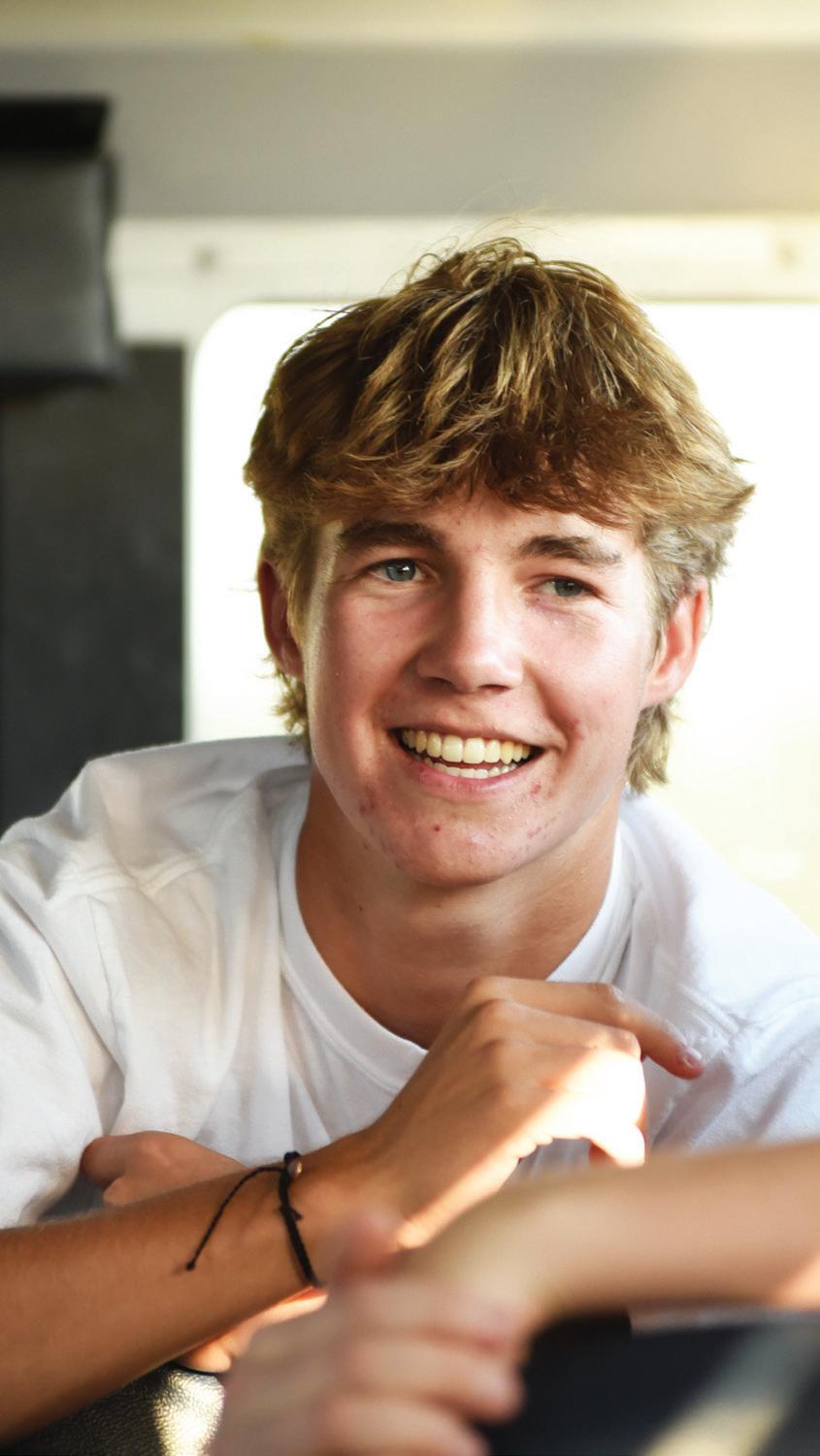

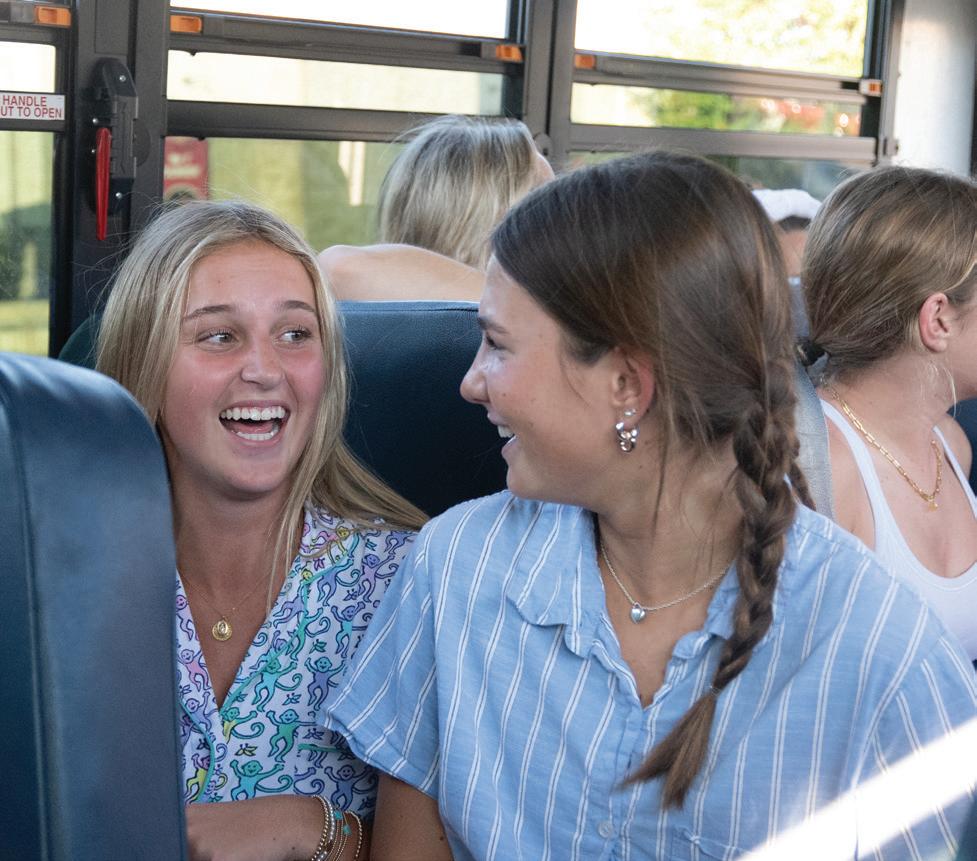
BROCE
SHE WAS SHE REALLY WAS.
EMMA CHALK ART TEACHER
story by PRESTON HOOKER
THE GAZA STRIP is 6,577 miles away from SM East. Yet, with current peace talks between Israel and Hamas on the anniversary of the Oct. 7 attacks, 2015 graduate Jacob Milgrim is reminded of something he wishes his late sister and 2017 SM East alumna Sarah Milgrim could’ve seen.
“I am, of course, hopeful there will be an end to the war but also saddened that [Sarah] will not get to see it,” Jacob said. “We are all still [reliving] Oct. 7, as was Sarah when she was killed, and I think about the loss of what she could’ve done when the war is over and we see the morning after.”
Israel and Hamas are currently engaged in peace negotiations in Egypt after signing off on the first phase of the peace plan on Oct. 8, according to CNN. Conversations Sarah, former Embassy of Israel Director of Civil Society Affairs, was consistently pushing for since the attack occurred.
Sarah was murdered in Washington, D.C. outside of the Capital Jewish Museum on May 21. She was 26 years old. The shooter was protesting Israel’s actions in Gaza, targeting Sarah and her boyfriend, Yaron Lischinsky, as they left an event at the museum.
“The irony of the situation is she was at an event to work on bringing more aid into Gaza,” Jacob said. “[Sarah], who, for the past two years at the Embassy, had been working to help all these people who were at a disadvantage. She was someone who was working to help Palestinians.”
“People forget [others’ deaths], and even I forgot until all of this happened: it’s not just stuff on the internet,” Emma Chalk, Sarah’s best friend and SM East art teacher said. “100% we are [desensitized to violence], and it’s really heartbreaking because [Sarah] was filled with so much care and tried her best to do what she believed was right.”
Sarah lived by the motto “Tikkun Olam,” Hebrew for “Repair the World.” At SM East, Sarah’s actions reflected this pledge, and were carried all the way to the embassy. She was involved in both Environmental and Recycling Club, Jewish Student Union, Young Democrats Club and many other organizations.
“She was as involved as you can get,” Chalk said. “She always loved to take care of people, fix problems, see where the root causes of things were and figure out better ways of taking care of people [and] making them happy.”
After graduating from SM East, Sarah went on to get her bachelor’s in environmental science at the University of Kansas, her master’s in international affairs at American University and another master’s in resource development and sustainability from United Nations University for Peace in Costa Rica.
A LOT OF
Judaism is questioning and asking yourself ‘Why?’ and discussion and debate. [Sarah made] sure that she was someone who always [asked] ‘Why’ and [investigated].”
JACOB MILGRIM
SARAH’S BROTHER
Sarah’s death, like many others amidst political turmoil, was quickly buried by other global news. Executive orders, attacks, revolutions and foreign policy ran to the top of the page and on everyone’s screens.
Late SM East alumni Sarah Milgrim is remembered for her impact on her surrounding community at SM East, the Israel Embassy and beyond
On top of endless clubs and activities, Sarah would frequently babysit for thenthird-grader Morgan Beedle, and her 2025 SM East graduate sister Sophia Beedle. Sarah would educate the sisters about current events and national news, making sure to keep them in the loop at a young age.
“She really focused on people’s rights and women’s rights, and I feel like I’ve always been that way,” nowsenior Morgan said. “I feel like the influence from her and then throughout my family has stuck with me.”
Morgan has often discussed politics and her views on women’s rights and equality with her friends and family, doing research and staying informed — exactly what Sarah had been pushing her peers to see: the potential for global justice.
the community — fit for Sarah’s personal aspirations.
In late February 2017, SM South students vandalized SM East’s Track and Field shed with three spray-painted swastikas and a message: “East loves Nazis.”
Sarah was disgusted.
SHE WAS as involved as you can get. She always loved to take care of people, fix problems, see where the root causes of things were and figure out better ways of taking care of people [and] making them happy.”
EMMA CHALK
ART TEACHER
Morgan’s mother, Liz Beedle, recalls Sarah’s influence on her children, attributing it to Sarah’s person as a whole.
“I remember Sarah being very upset about [the vandalism],” said Liz. “[She explained] to my girls why that was upsetting, and rightfully so.”
Sarah began working at the Embassy of Israel in 2023, where she had little time off to return to KC.
“I’m just glad [Sarah] was able to come back [to the SM East area] and take a break from her job,” Chalk recalls. “She was a busy, busy girl for sure.”
Sarah wanted to do whatever she could to help everyone, according to Chalk.
At SM East, Sarah worked to help her community through caring for the community and her peers. Her extracurriculars would ignite the interest for her first degree in Environmental Science at KU. Nearly all the activities had one goal, hinting back at her motto: “Repair the World.”
“People who are doers and go out and try to make a change [are impressive],” Liz said. “Morgan was in third grade, and I went to her [parent-teacher] conference and I guess the kids, third graders, were talking about the [2016] election a lot. I [hadn’t] even talked to my kids about any of [that]. That was Sarah all summer. I thought it was great.”
While also being a part of the SM East’s Young Democrats Club, Sarah worked on Hillary Clinton’s 2016 presidential campaign. She went door-to-door to garner votes and support for a cause she truly had faith in.
Sarah always fought for her beliefs.
“Sarah wasn’t going to be 18 in November to vote for the election, but she felt very strongly about it,” Liz said.
Along with her goals, Sarah’s Jewish identity was just as important to her. She belonged to Congregation Kol Ami while attending SM East — a synagogue focused on inclusion and giving back to

Less than a month after the incident, SM East held an informative assembly titled “United Against Hate: Past, Present and Prevention,” to inform students about antisemitism.
Being a part of the Jewish Student Union at SM East, Sarah was directly involved with the planning and execution of the event. Sarah wanted others to see the potential the world around her had, from third graders to her high school peers.
Now, eight years later, current JSU President, senior Alex Benditt reflects on Sarah’s work, and what SM East can learn from it.
“[Sarah] left a fantastic legacy, and I think the biggest thing [to take away] is [her] trying to put [herself] out there,” Benditt said. “I would say about 90% of our club is non-Jewish students; my vice president is Catholic. So you get a diverse group of people who are learning something, which is a very useful skill that I think we can all try and appreciate [from Sarah].”
Jacob attributes this open-mindedness to some of these core values from her lessons in Judaism, which encouraged her to ask questions of herself and the world around her to truly take in all perspectives.
“A lot [of] Judaism is questioning and asking yourself ‘Why?’ and discussion and debate,” Jacob said. “[Sarah made] sure that she was someone who always [asked] ‘Why’ and [investigated].”






Alongside her work in Judaism and social justice, Sarah had an affinity for all living things. Growing up, she had a beta fish, a hamster, a rabbit and two dogs. In college, Sarah was involved with Operation Wildlife, where she would help animals injured by humans.
“[Operation Wildlife] feels it’s their duty to help these animals get back out into the

wild,” Jacob said. “All of her interests and things like that [show that] she’s just a very caring and selfless person.”
Years later, Sarah would work long hours and late nights at the Embassy, according to Jacob, working so hard that lunch and rest weren’t ever a priority.
Sarah’s friend and roommate in D.C. had a disability and she took care of her in


between the day-long shifts.

“I would tell her ‘You’ve got to take time to yourself. You’ve got to take a break and eat lunch and all that,” Jacob said. “And she was like, ‘No, there’s stuff to be done,’ and she knew how important it was. She’s just so driven, because there was so much to do, and there wasn’t enough time in the day.”
It takes many people who share the same outlook as Sarah to make a peace deal. Sarah’s efforts didn’t directly lead to the talk of peace between Israel and Hamas. But it does remind those who knew Sarah how she lived with compassion and was driven by the pursuit of peace: repairing the world.





OCTOBER 13, 2025

Senior Aleksei Bersenev aims to major in aeronautics and become a commercial pilot after growing up flying planes in Moscow, Russia

Back in Russia, when I used to live in Moscow, I remember in third grade, my class and I just went on a school [trip] at an Aviation Club nearby. There was a guy [who] used to be a pilot back in the day, and he was telling us stories about aviation, how planes fly and stuff like that. I was thinking in the future, I don’t think I’m that type of guy who’s going to sit in the office all day in front of the computer, because I’m probably going to die. It’s going to just be too boring.
When I first got in the sky, it was like, a meter off the ground, but it was probably three seconds or so. And then I decided to stay at the same airport, and I was working as a volunteer, and the way they paid me was [that] I was flying in really big [gliders] for 20 [flight] hours. They’re really basic, [and] also old, but they still fly.
When I was a kid, I just wanted to move here, but my parents got an opportunity in 2022 [when] the war started with Ukraine. My sister decided to play in the green card lottery, and we just won for the first time. So my family decided to move just because they had a chance to, and also my parents didn’t really agree with the political views of the government.
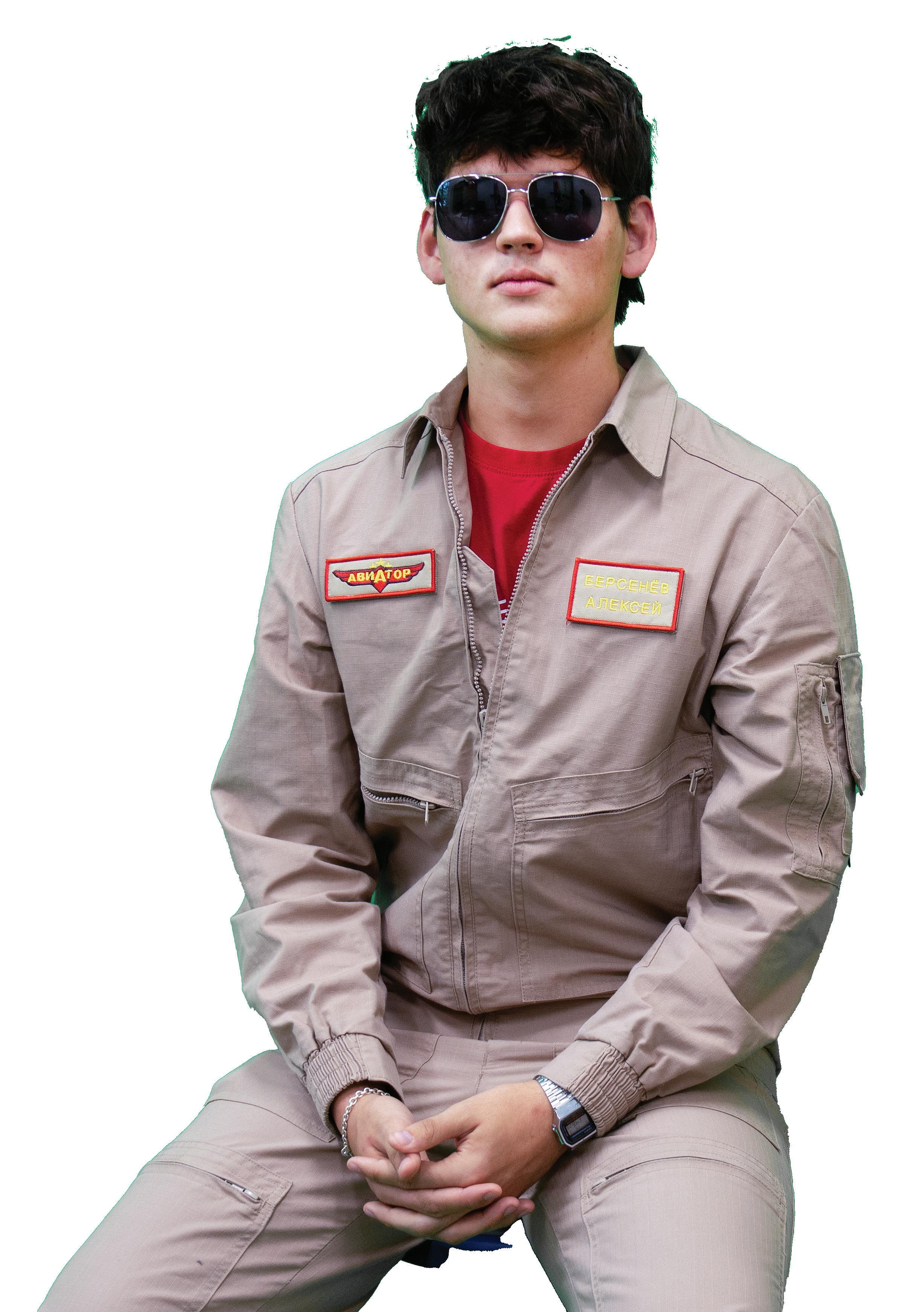
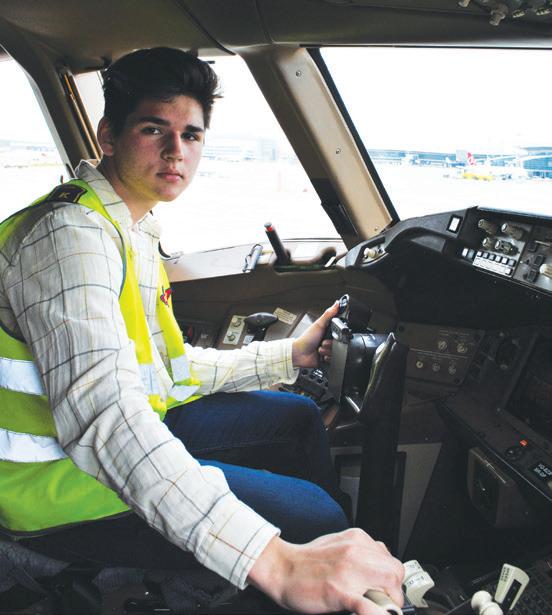

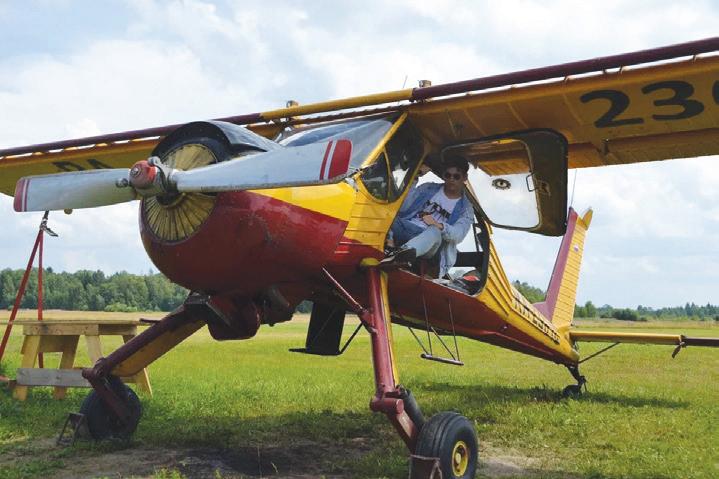
The head Hauberk editors curate an engaging and close-knit environment while maintaining high yearbook standards
The head editors thoughts on yearbook this year
story by LIBBY MARSH
story by LIBBY MARSH
THEN -JUNIOR CLARA Breneman was equipped with a change of pajamas, fluffy socks and a blanket to get her through the next 11 hours of the final deadline for Hauberk, SM East’s yearbook.
The only thing keeping her awake after a 6 a.m. swim practice and full school day were three cans of Alani Nu energy drink and determination.
“I don’t even think [becoming an editor] was a decision,” Brenaman said. “It’s just like an ‘I can’t quit’ kind of thing, you know what I mean? If I didn’t do it, who else would do it?”
Despite the tedious hours spent on InDesign, work nights in the library and journalism back-room discussions about font size and Photoshop settings, headeditor of the yearbook was nonnegotiable for Breneman.
Even before being named editors, Breneman and seniors Charlotte Wissel and Mary Green collaborated to plan new staffer welcomes at the end of last year and Distribution Day for the yearbook. Their trio group chat dates back to editor interviews last spring, texting one another nervously: “Oh my God, I’m so scared. Literally sh*tting my pants right now.”
And after a week in Dallas developing the yearbook theme at a journalism workshop, a California trip further developing the theme and ever-changing design concepts, the three have become a close-knit team.
“It’s like a sports team almost, but I don’t really like sports,” Wissel said. “I like working with a lot of people and just seeing how everyone can be creatively different and just seeing how many ideas can go into one book and make one thing work.”
With a constant stream of questions from staff members, seeking feedback from adviser Dow Tate and many, many page drafts, everyone on this year’s Hauberk staff is eager to put in the work, according to all three head editors.
Head design editor and junior Halle Klocke makes multiple drafts of her pages, and seeks critiques from Breneman and Tate.
“I feel like everyone’s just been really good at stepping up and [has] just been [saying], ‘I can do more, I can do more.’” Klocke said. “And I feel like, definitely, that aspect has been better.”
Hauberk writers will spend one to two months working on a story. They become friends with profile subjects after interviewing them at least once a week, drafting their story, redrafting and polishing it.
Designers use InDesign and Photoshop to create spreads, modules to go on portrait pages or the hundreds of senior ads.
Breneman will find new staffers seeking design help from her during both the third and fifth hour Hauberk classes. She’ll sit on the jouch (journalism couch) in the backroom helping designers, pointing out things to change or ways to improve the spread.
Breneman, Wissel and Green will meet at someone’s house to work or go to “elite weekends” to continue theme development and seek feedback from advisers from other Kansas schools.
“We feel like if the staff has a good relationship with their leaders, if the three of us are really close, then the rest of the staff is gonna like, perform well and be friends and be fun together,” Breneman said. “If we like each other then the rest of the staff will like each other.”
When at least three people are working on a yearbook page at once — a designer, photographer and writer — closer relationships lead to better communication, according to Brenaman.
“The
closer you are and the better,” Breneman said, “You don’t even necessarily have to be close. You have to be nice to each other and you have to have a good relationship, but also being okay with having hard conversations or ‘come to Jesus’ moments. But as long as you really have a positive attitude and are literally just nice to each other things [go] better.”
As a sophomore, Wissel remembers opening her chemistry homework in the journalism room after completing all her yearbook work. Tate walked over and demanded What are you doing?
Now, as an editor, Wissel sees all of the behind-the-scenes work that goes into producing a book and understands that there’s a never-ending list of things to do. The editors see staffers proactively looking for more to do. Green will often find people asking, “What can we help with?” and “Where do you need help?”
“We all are one team, so it’s not just like if you’re on photo you don’t just have to be doing photo, you can help with senior ads,” Green said. “And that’s what we strive to say is it doesn’t matter what section you’re in, you can help somewhere. So, if you’re not doing anything at late night, it’s always, you find something to do.”
With hundreds of spreads left to design, photos to take, pictures to caption and hours of late nights to come, the Hauberk editors are determined to produce the best yearbook possible.
“I did this to myself,” Wissel said, “I wanted to do this, so I’m gonna do it right. I don’t do things unless I’m willing to give them 100%. So going into it no matter how stressful it gets, the book will get finished and it’s gonna be good, just because I’m willing to put in that effort to make it good, even if it’s stressful.”
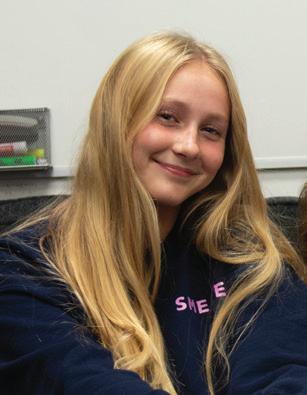
“I wanted to do this, so I’m gonna do it right. I don’t do things unless I’m willing to give them 100%.”
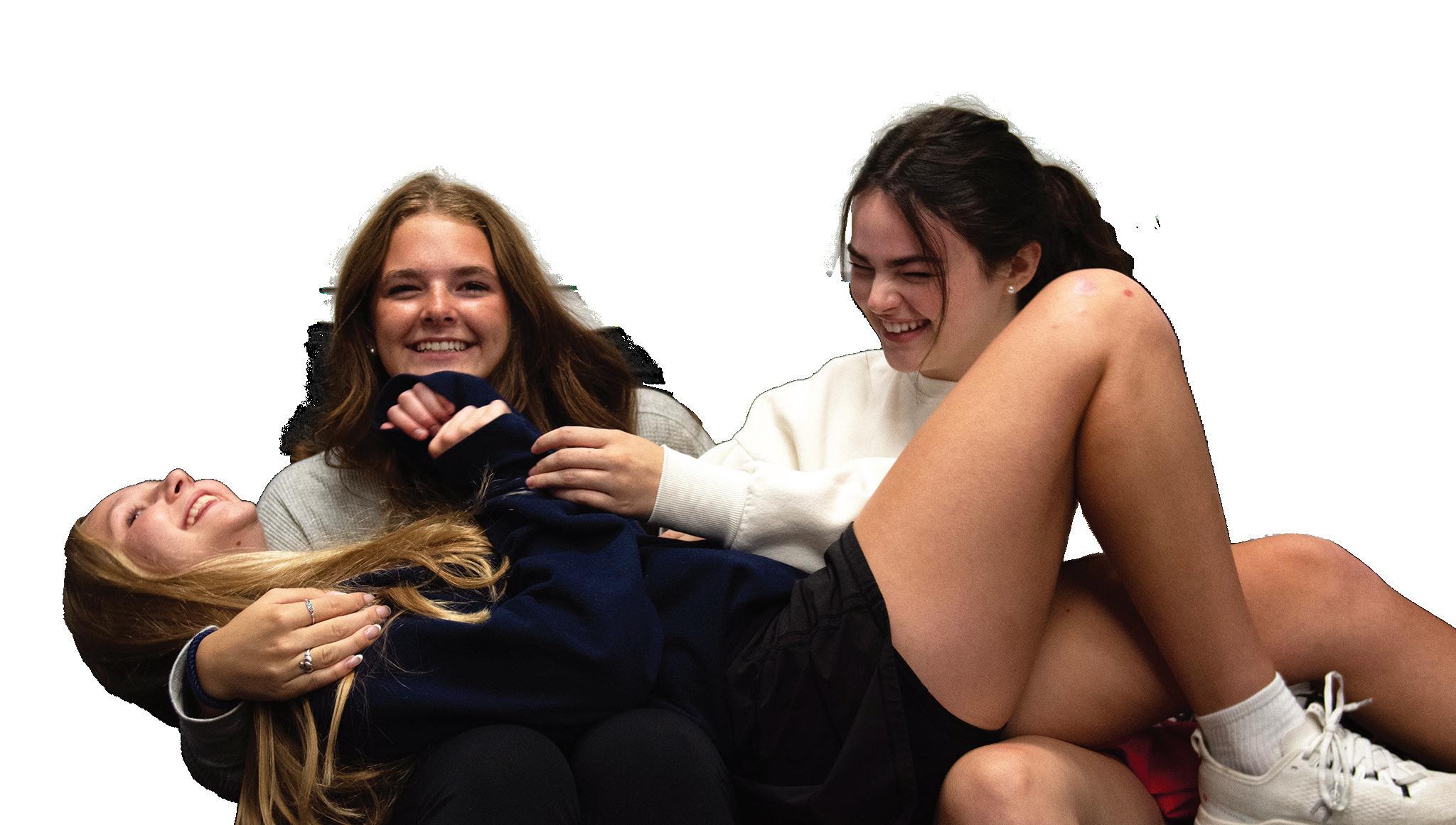
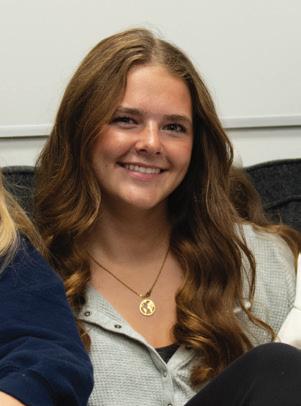
“If we like each other then the rest of the staff will like each other.”
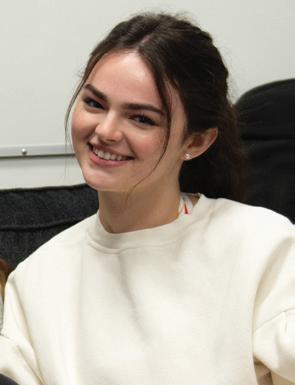
“It
doesn’t matter what section you’re in, you can help somewhere.”

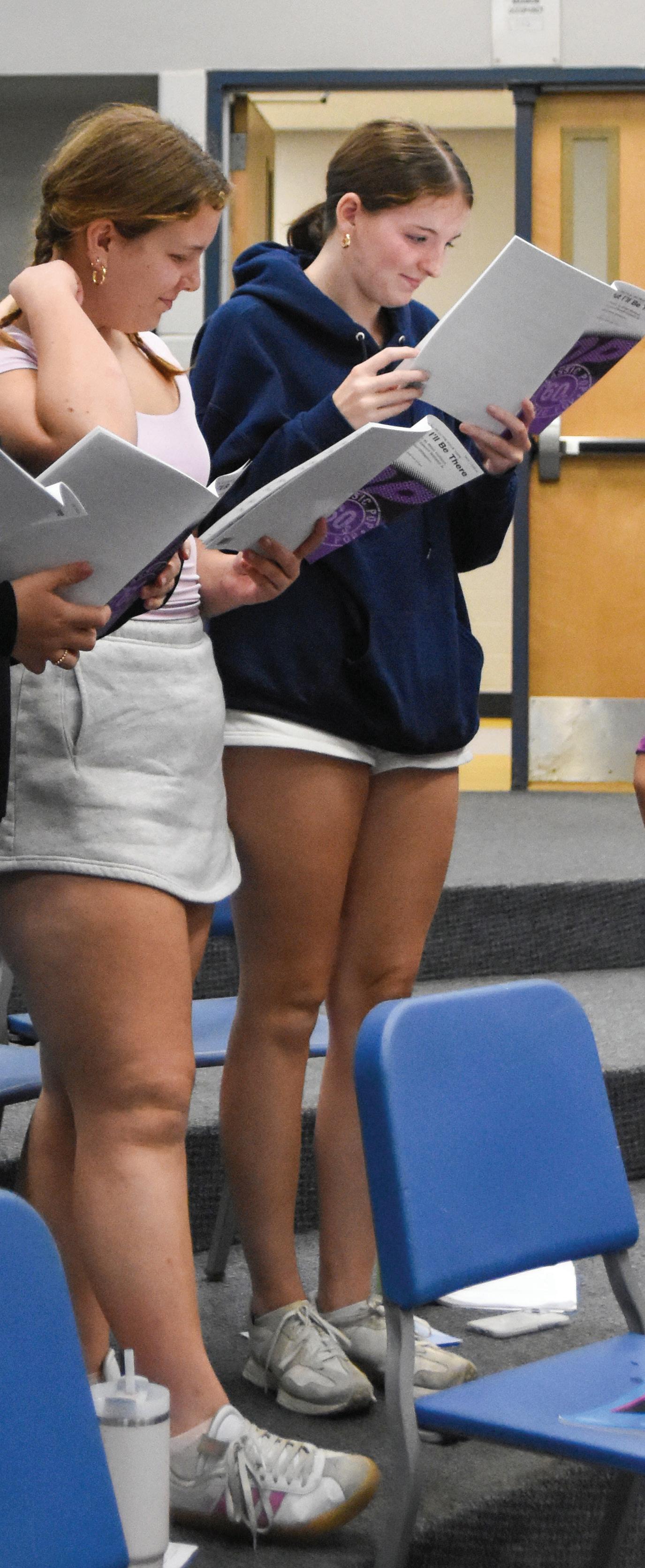
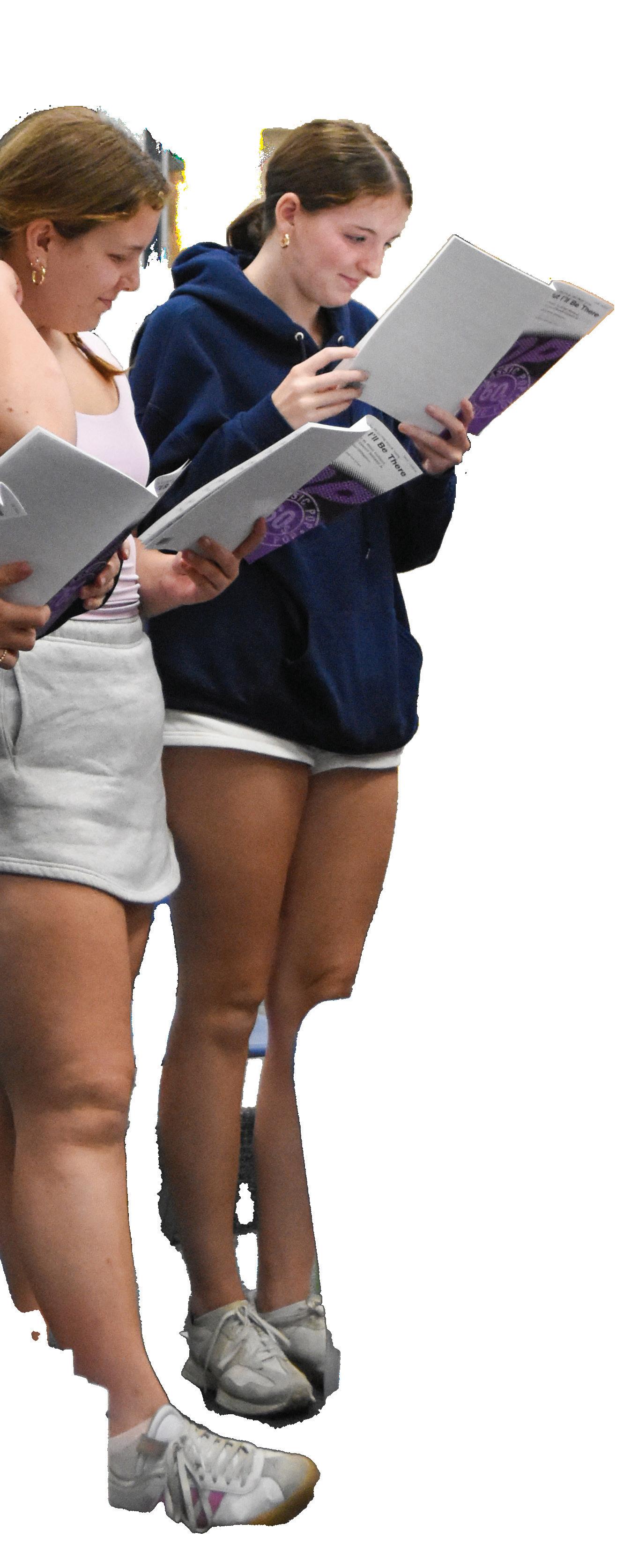

Stage Right theater positively impacts students’ high school experiences through the friendships found in the program and the life skills learned
story by SLOANE HENDERSON
PLAYING UNO IN the green room while waiting for the next scene is a tradition for senior Jordan O’Brien.
As is getting a much-needed pre-show dinner with her friends at Torchy’s Tacos or Panda Express. Or sprinting back and forth backstage to make sure a scene doesn’t go on without her.
The fond memories O’Brien has of these traditions can all be traced back to second grade, when she decided to join Stage Right — a private theater company in Kansas City that has brought her a community.
“[Stage Right has] always been a really welcoming place,” O’Brien said. “Everybody’s always super nice. And I feel like it’s always been [Donna West] who runs the program, so I’ve grown up with her a little bit.”
Founder Donna West says Stage Right started as a program for students whose schools didn’t have a strong theater program, but since being founded in 2010, it’s become more than a creative outlet for students. It’s a place notorious for the friendships students make within the program and the life skills it instills in students.

West said. “I really overstep. I parent a lot. I help them make life decisions.”
West often finds herself sitting in her car after the twohour rehearsal at 9 p.m., waiting. Waiting for her students to leave to ensure they get to their cars safely, but they won’t stop talking to one another.
“They all drive at 9 o’clock when the rehearsal is supposed to be over,” West said. “I’m still sitting in the parking lot at 9:30 telling them to go home, because they won’t leave each other.”
It’s during moments like these that she watches seniors from the class of 2026 create a community that she hasn’t seen to the same degree in the past.
Senior Caroline Reda can attest to this.
Thirteen years of working with Stage Right, more than a few horror stories on stage and many friendships later, Reda can’t believe her time with the community Stage Right has brought her is almost gone.
IT’S LIKE watching my own children grow and leave the nest. I really overstep. I parent a lot. I help them make life decisions.
DONNA WEST FOUNDER
West considers herself a second mom to many of her students and though her rehearsals are full of singing and dancing, that doesn’t accurately describe exactly what she teaches during that time. Whether that be through encouragement, teaching them invaluable life skills — like self-love and encouraging one another — or taking their problems personally.
“It’s like watching my own children grow and leave the nest,”
Soon she won’t see her friends every Thursday from 7 to 9 p.m. Friends that she’s known since she fell midsong while playing Elsa during COVID. Since she had to take three rounds of steroids due to a case of laryngitis. Since she had to help create a makeshift stand because a microphone broke right before a show.
“I’ll miss performing will all these people that I’ve been performing with for the longest time ever,” Reda said. “There’s some people in the program that I’ve known for [so long].”
Without the program, Reda and O’Brien wouldn’t have lifelong memories from their school photoshoot, organizing senior
assassins at the end of year or playing Romans and Christians during their countless lock-ins.
West, too, has noticed the impact of Stage Right on her students’ high school experiences and the tight-knit community it has brought them.
“There are friend groups that developed in the senior class that are tighter than I’ve ever seen friend groups, and they come from all different schools,” West said. “They would have never met each other if it hadn’t been for this.”
However, memories aren’t the only thing Stage Right has given students. One of the program’s biggest benefits is the life skills it instills in students that will help later in life because according to O’Brien there is a lot to a musical that most people don’t understand.
Performing isn’t just singing and dancing, and it’s not just following instructions. According to Reda, you can’t just read off a script. Putting on a show requires the students to work together to figure out blocking, advocate for themselves, and problem solve to come up with a show that will look the best and sell the most tickets.
And it’s all for the feeling of opening night. When the curtain opens and students see the audience for the first time. In front of friends, family and strangers, the show they’ve been working on for four weeks goes live.
This is what Reda will miss most. That feeling in front of the audience, performing a show practiced so much it’s second nature and most importantly, having her friends bowing next to her at curtain call.
“I met [O’Brien] through Stage Right, not through school,” Reda said. “I’ve been performing with these people for so long, it’s just really sad to not be able to see them soon.”
Bonding activities and traditions Stage Right has done in the past activities
“Pitch Perfect”
for elementary school
at nursing homes traditions for rehearsals performing at the
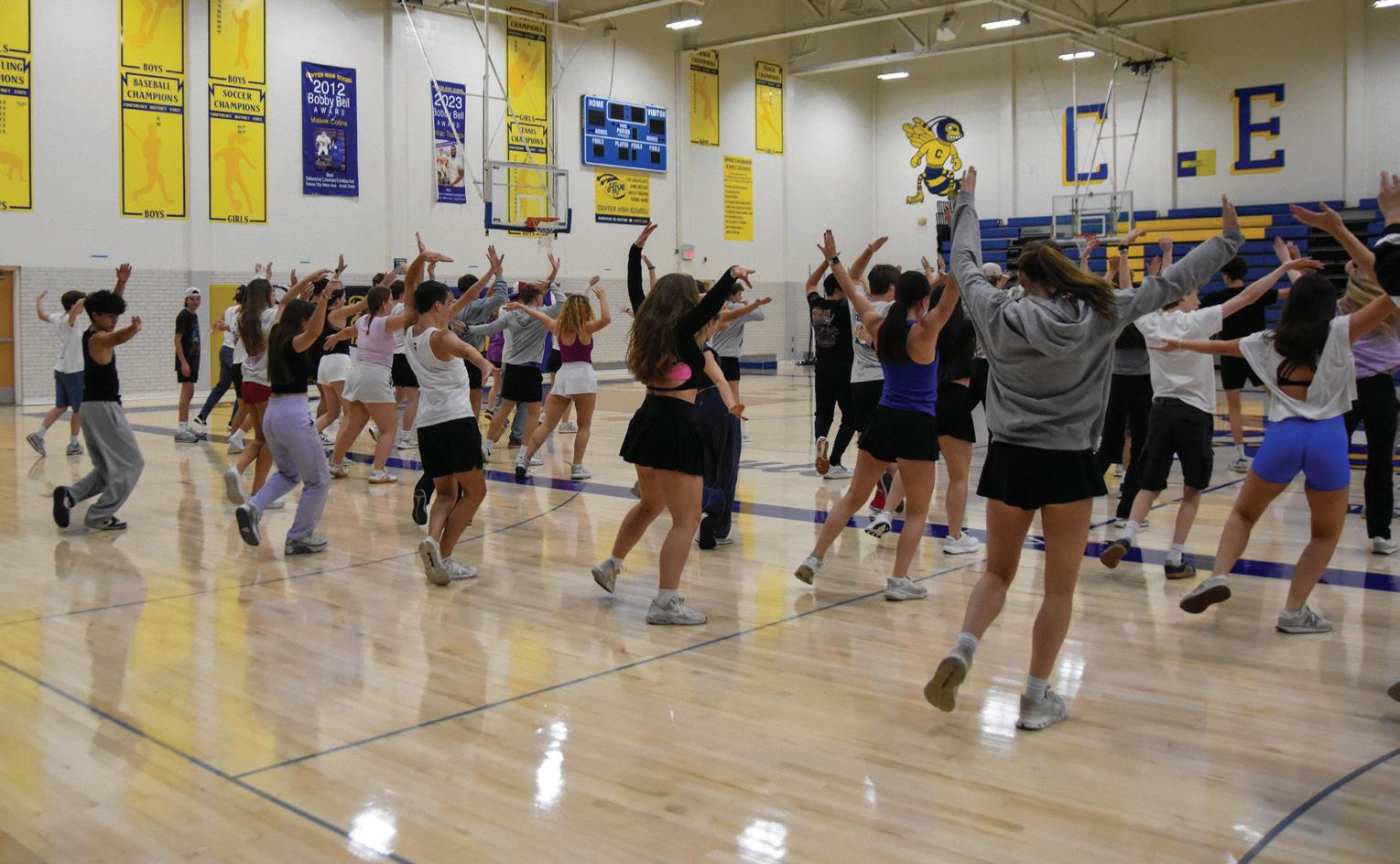


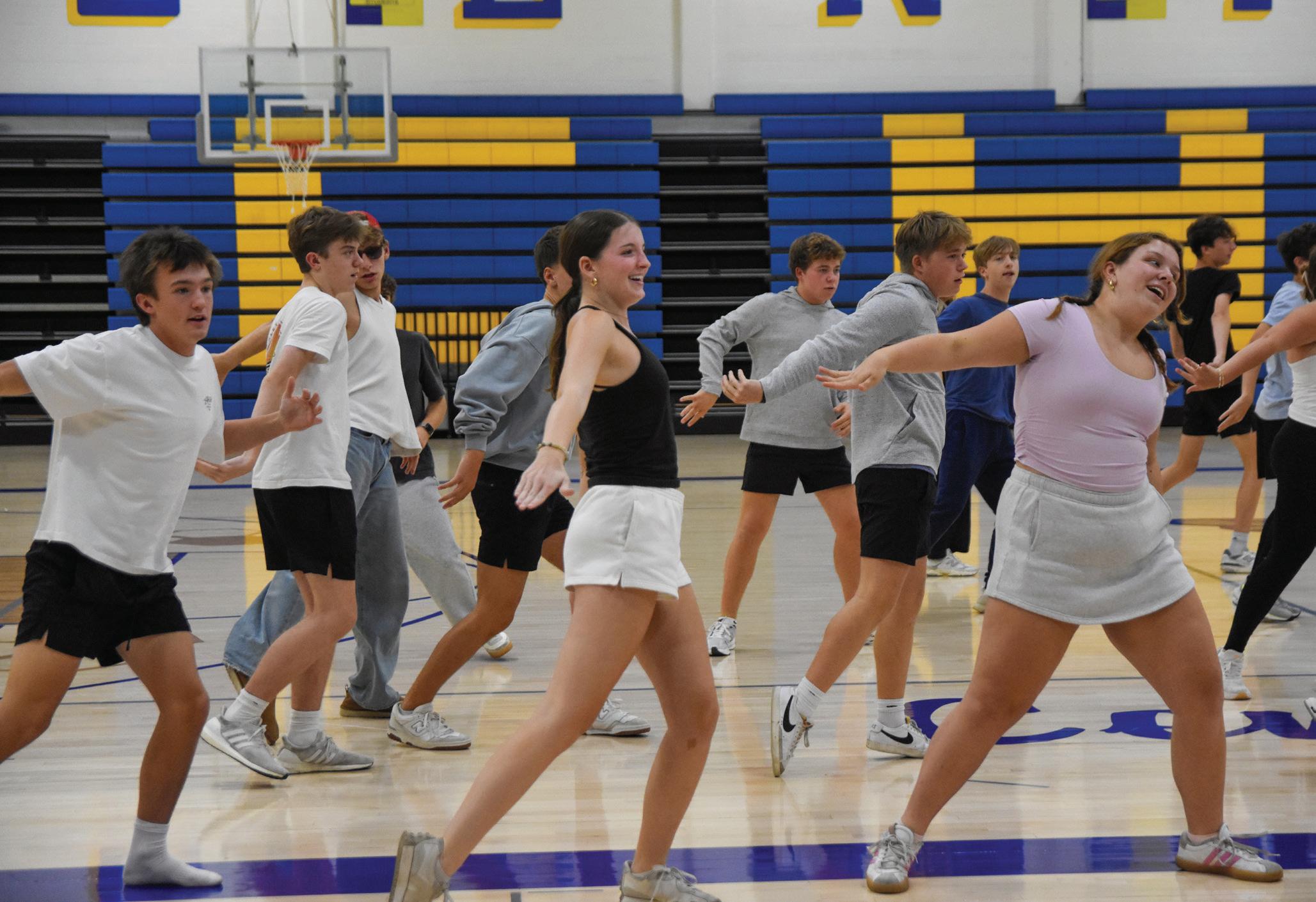


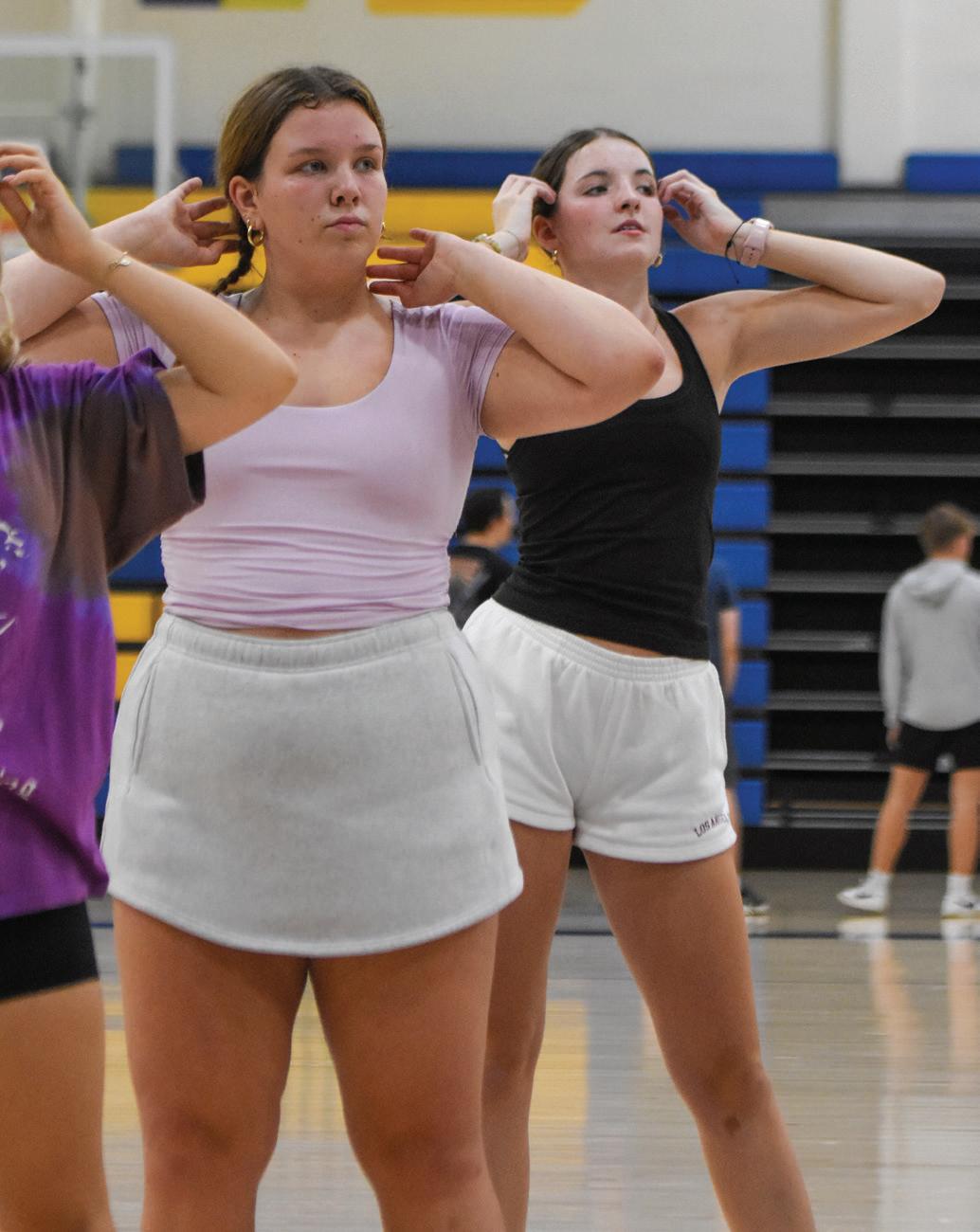
Sophomores Ashley St. Denis and Delilah Bales bring confidence to SM East with the new Cosmetology Club
WAIT, WE DON’T have a cosmetology club?”
Sophomores Ashley St. Denis asked, turning to Sophomore Delilah Bales.
Bales and St. Denis were sitting in a hot tub with their friends one summer evening, talking about the clubs at SM East.
When they realized none of the clubs focused on anything beautyrelated, the idea for a cosmetology club was born.
Since the start of their friendship, St. Denis and Bales have bonded over their shared love and passion for makeup, hair and all things beautyrelated.
For Bales and St. Denis, creating the club wouldn’t just be a space for students to do hair and makeup — it’s about building confidence and creating a community of people who share the same interest in beauty.
The two always knew they wanted to start their own club sometime in high school but never knew what it would be.
“Me and [St. Denis] were trying to think of things that we liked, and then we’re like, ‘Wait look at the obvious, we both love doing hair, makeup, nails, all that type of stuff’, ” Bales said.
Even though the two knew turning a summer hot tub idea into a reality would take preparation, time and planning, that didn’t stop their drive and dedication to make the club a reality.
And when the girls found they had to get a teacher sponsor to create their club, they knew exactly who to ask — history teacher Andrea Franklin.
“I currently have Ms. Franklin for AP Euro, and Delilah had her last year for World Regionals, so we thought that she could be interested just because she’s fun and would be willing to help us,” St. Denis said.
After Franklin got back to them, agreeing to help in an email, the girls were eager to get started and bring their club to life.
Just a week after their first meeting with Franklin in August, where they discussed the focus and other details about the club, the girls were filing out forms and finalizing details, watching their idea slowly become an official school club.
Now, with the club officially up and running, St. Denis and Bales began discussing what members could expect, from hands-on lessons to exploring different areas of cosmetology.
The girls decided they will hold meetings in Ms. Franklin’s room once a month, discussing different cosmology topics they’ll cover such as hair, nails, and makeup.
“Each meeting, we want it to primarily focus on something different every time,” St. Denis said.
They also say the more broader topics that they cover, such as hair and makeup, will take multiple meetings to discuss.
They will learn all the specific aspects of the topic such as, cutting and dying hair or, mastering the perfect smoky eyeshadow, will take more time.
The girls also plan to bring in local guest speakers from around the area to share their experiences working in the area of cosmetology being discussed at the time.
Along with planning monthly lessons, they’re also planning how they’ll fund their projects and meetings such as paying for supplies or snacks.
“It’s obvious some stuff will cost money and we’re just going to see later down the road, but right now we’re also going to try to focus on a lot of activities that don’t require money, and just a lot of games and stuff that will get people involved.” Bales said.
While the two are trying to save
money right now, the girls aren’t letting it slow them down. For now, they’re just excited to start building a community and getting many students interested in cosmetology.
Ensuring the club is up and running, steady and consistent, is the girls’ main priority.
The girls also plan to hand out flyers and post on social media hoping to better promote their club.
“We’re hoping it’ll grow when it really starts to catch on over time and people will hopefully start to hear more about it,” St. Denis said.
With their teamwork and passion St. Denis and Bales hope to turn it into a long-lasting part of their school.
One that helps students feel connected, confident and beautiful.


The owners of the club’s favorite makeup products




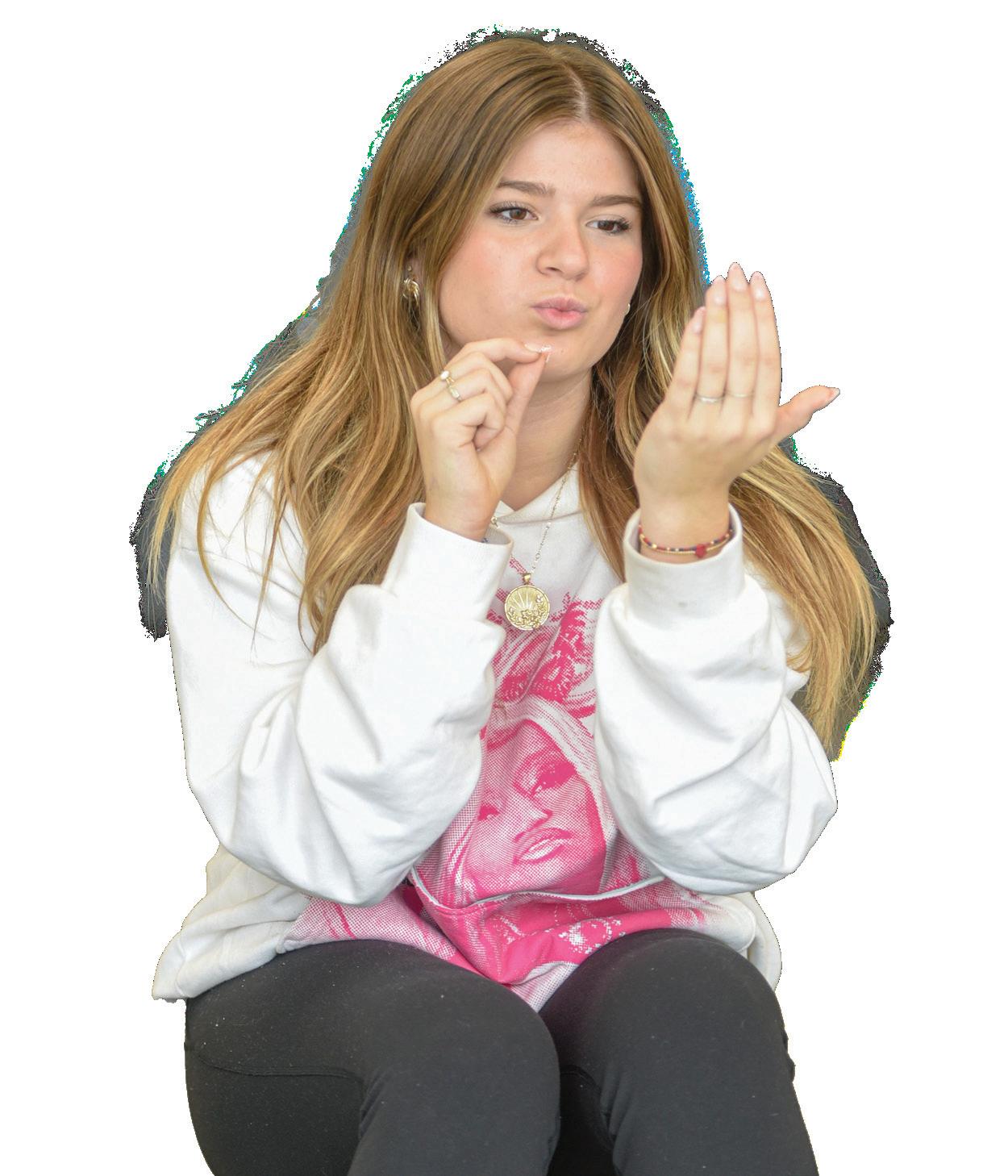
story by CAROLINE BEAL
DECKED OUT IN Kansas City sports apparel and fall sweaters, In Cover Women’s Clothing and Gift Boutique is a quaint shop tucked into the Corinth Square shops. The wide variety of jewelry, clothing and customizable accessories makes it perfect for personal and gift shopping.
Although the aroma of the floral candles being sold around the shop made browsing difficult without getting a headache, In Covers’ quality products and stocked shelves made up for the pungent smell.


FROM CHEETAH PRINT sneakers to various perfumes, Clairvaux offers a wide range of accessories, clothing, fragrances, shoes and jewelry. However, every time I looked at the price tags — those that were listed — I was shocked by the high price points.
Simple denim jackets cost upwards of $350, while the sneakers were all almost $250. Even with the stylish prints and boho aesthetic appeal, the pieces sold at Clairvaux aren’t worth the expense.






FILLED WITH FLORAL designs, ceramic pumpkins and accessories created by local artists, Lulu’s Boutique has no shortage of retail items. Even the displays through the large glass windows of the store were bright and cluttered with clothing, art and home supplies.
Although Lulu’s seemed overwhelmed at first, I loved the selections of vintage tops, candies and funny socks planted throughout. This boutique offers a choice for everyone.





opinions on the album through social media platforms, some being good and
Some said the album was underrated while others said the Tortured Poets Department tortured the music out of her. But I knew I had to listen to the album
One of my top songs is, “The Fate of Ophelia.” In the song, Swift ties together
funny valentines,” showcasing a cute relationship that fans already have or want.
Now the album may have its perks however, there are a few songs that I can’t even listen to without cringing or skipping to the next song.

“Wi$h Li$t” is brutally repetitive and honestly shouldn’t be in the album. The amount of times I hear “They want it all” and “I just want you” with the same monotone beat doesn’t put a good look on Swift. I’m definitely hiding the song from the album on my Spotify account.
cringy I can’t bear to listen to the full song.
“Life of a Showgirl” blend heartfelt lyrics and catchy pop beats that highlight Swift’s fame, but the corny songs like “Eldest Daughter,” “Wood,” and “Honey” overwhelm any of the decent ones.
Each track is a glimpse behind Swift’s life in the spotlight and behind the scenes. The pop and sentimental music captures fans’ emotions of sadness and despair –including myself. The snapping lyrics and cinematic sound are what really pull the album together, but still doesn’t uphold my expectations.
Over the few days of its release, social media doom-scrollers voiced their
Effie’s top songs off the album and her ratings out of five stars
Swift’s need for a peaceful and grounded life beyond the glitz, she departs from her romantic storytelling and leads into wanting stability and an overall perfect

“The Life of a Showgirl” upholds expectations but falls short at times due to cringy lyrics and constant melody changes
drama and personal friendships. It matched the storytelling of the album, but certainly not the feeling.
The album closes out with Sabrina Carpenter appearing on “The Life of a Showgirl,” a song capturing excitement and exhaustion under the spotlight. Swift and Carpenter both share a part in the song while harmonizing in the chorus, being a little choppy. The beat and tune of the lyrics become repetitive at times,




















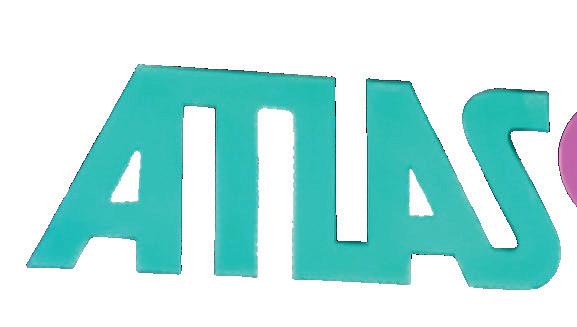

Atlas 9 is an immersive experience featuring an escape room-like atmosphere that recently opened by the Legends
story by BRIDGET DEAN
WHEN I STEPPED inside the plain black, rectangular building off Highway 435, near the Legends outlets, I was presented with an orange “FACADE” wristband after my tickets were scanned. As I looked around, the phrase “Field Agency for the Controls and Aberrations Defense Energies” was all over the walls.
“FACADE” is the made-up agency investigating a mysterious event that caused the movies shown at an old, rundown movie theater to come to life.
I was initially confused about what Atlas 9 was, as it’s described on their website as an “interactive narrative experience set inside a fictitious 90s movie theater.” I had no idea what to picture from this description.
Then, I had the opportunity to speak with one of the workers, who explained the whole imaginary story behind the Atlas 9 experience to me.
The story goes as follows: a man named Mark ran this old theater and was excited to use his new projector, in hopes of keeping the movie theater up and running. On June 31, 1995, Mark unveils his creation, but something goes wrong and the projector blows up, causing Mark, Melissa, the
manager, and the audience to disappear. FACADE was then called in to investigate the situation on July 1, 1995.
After learning this, my team and I scanned the microchips in our wristbands to create our agent profiles. We were then sent to explore the theater, which was in what is considered a “Liminal Zone” — where the movies had come to life.
Each room had a completely different look, texture and vibe, flowing from one to another until we were unable to tell how we’d entered the room in the first place. One room was bright and yellow, with giant boxes of candy spilling pieces onto the floor while an actress dressed as a candy fairy walked around.
Another room was entirely made of glass mirrors, making it impossible to tell where we were in the room, as we saw endless reflections all around us.
My personal favorite was the jazz room, which had a Great Gatsby aesthetic with its gold accents and a saxophonist playing front and center on a stage.
We continued exploring the movie theater, encountering tasks as we navigated through various rooms, doors and tunnels. The task cards, called FAZEs, gave us information about what the anomaly created by the incident was and how it had been affected
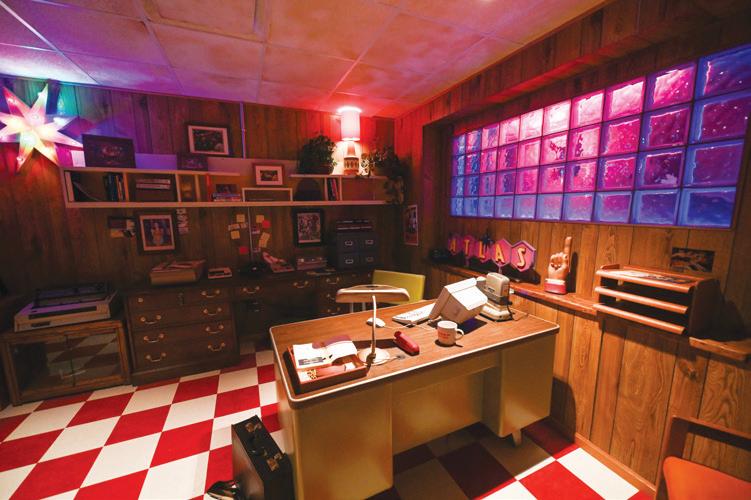

We asked an aerial arts performer Lisa Caldwell how she enjoys the job
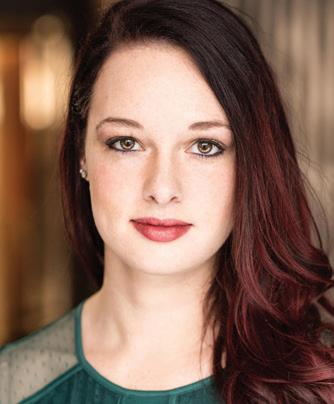


LISA CALDWELL AERIAL PERFORMER
ITS VERY FUN and family-friendly. People of all ages can enjoy the experience because every day is different.”


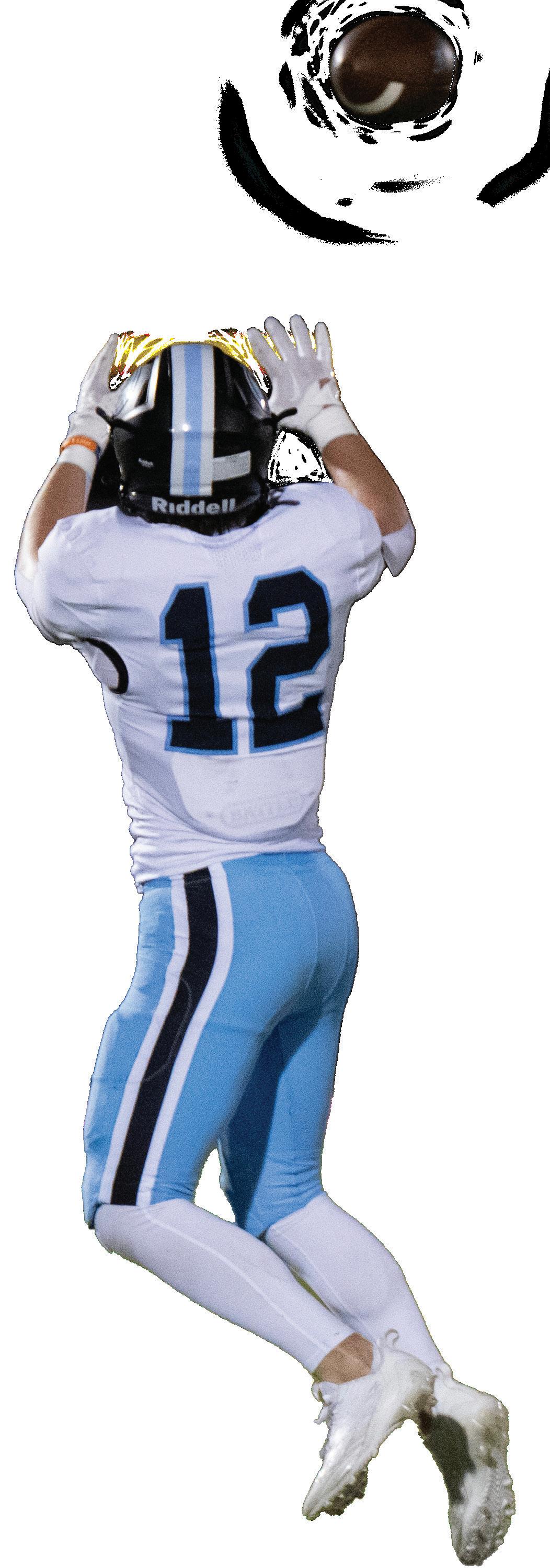
Sophomore Thomas Vance catches a football thrown by quarterback and senior Jack Reeves.
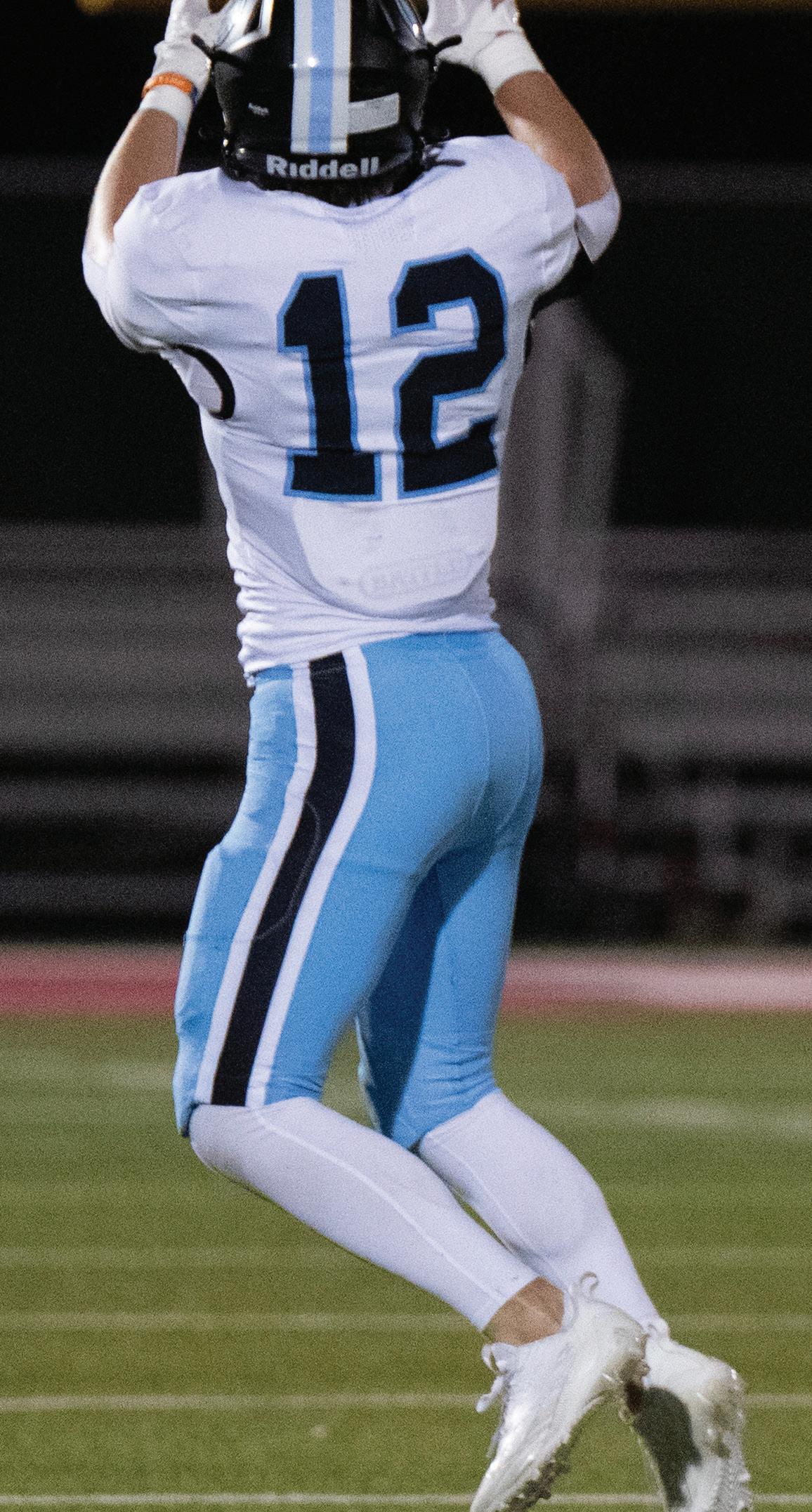
MIDDLE Senior Jackson Wening steals the ball after the Olathe West goalie tried to pass it to his teammate.
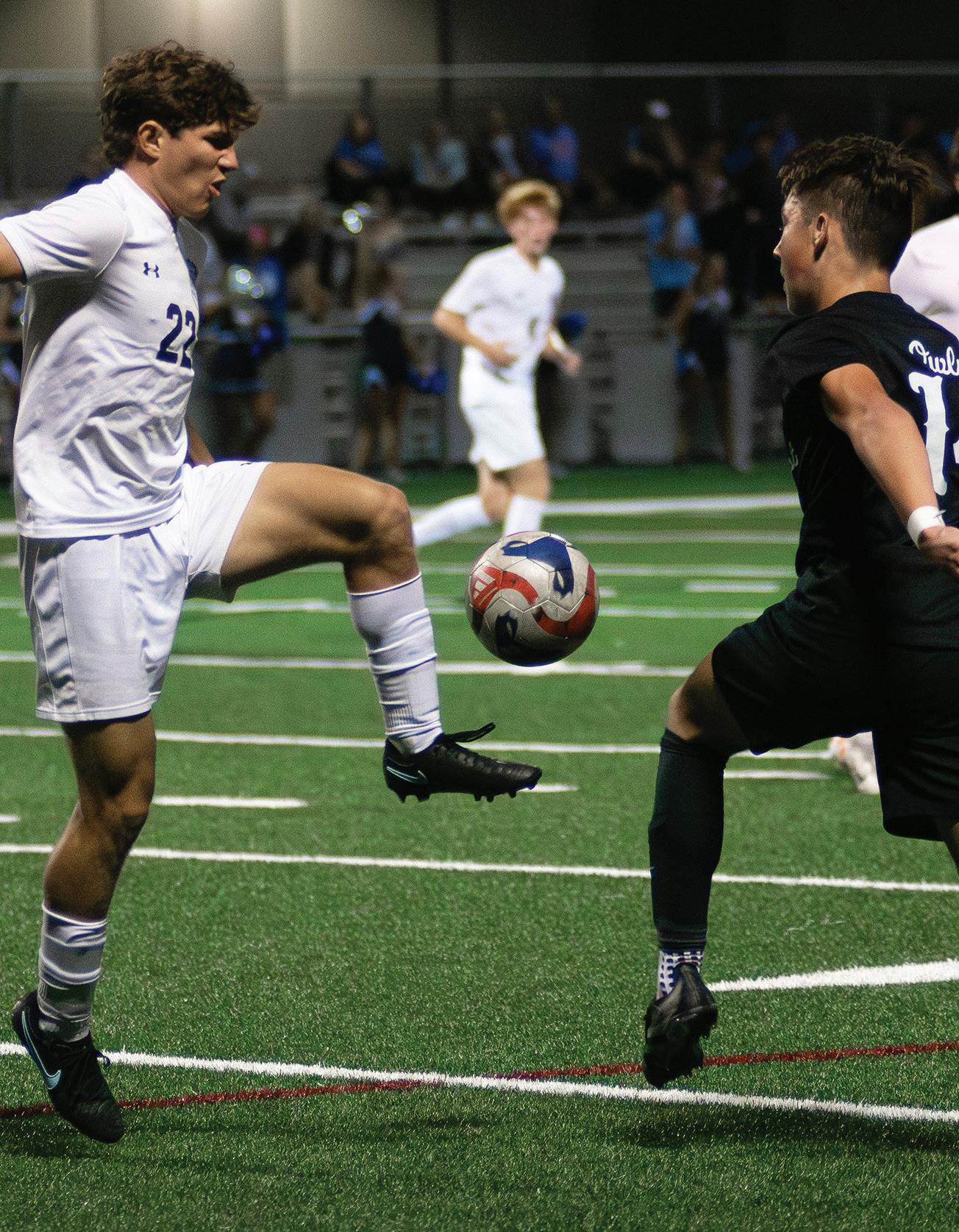
Senior Jack Reeves scored an 8-yard rushing touchdown to put the Lancers up 20-14.
THE LAWRENCE HIGH School Lions took the lead in the first quarter, scoring a rushing touchdown with nine minutes left on the clock. The Lancers forced a Lions punt, scoring with the opportunity in the second quarter, giving the ball back to the Lions. Lawrence then scored with less than a minute on the clock, giving the ball to the Lancers on the 20-yard line after their kickoff.
After no points were scored in the third quarter, the Lancers scored one minute into the fourth quarter and then scored a two-point conversion, making the score 28-14. Lawrence quickly responded with a touchdown, and two minutes later, the Lancers took one last drive down the field to end the game after getting a first down inside the Lions’ 10-yard line.
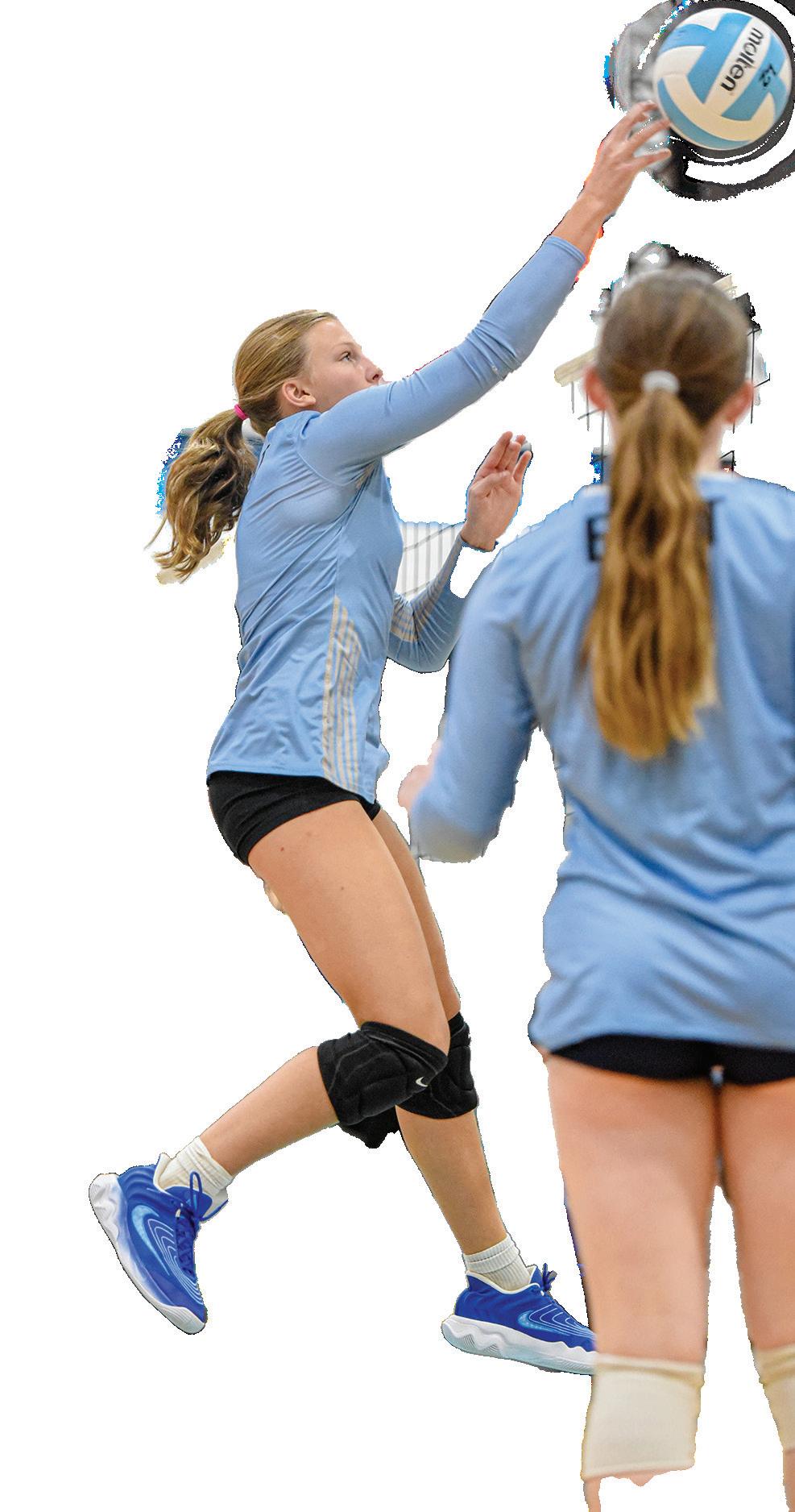
BELOW Sophomore Darcy Kroening tips the ball back over the net after receiving a bump from a teammate.

Junior Charlotte Hardy shares show she felt after breaking the school record for the womens 5K
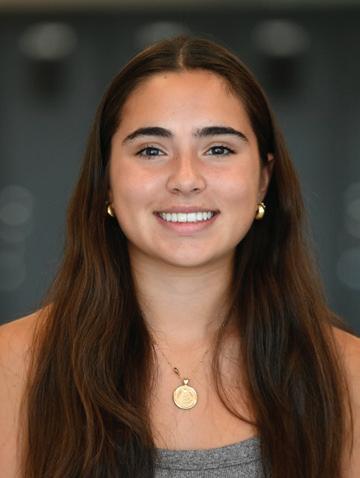
CHARLOTTE HARDY JUNIOR
IT FELT SUPER good. I have technically gone under the school record time in a few non-school affiliated races. So I knew It was something that I was definitely capable of, so I’m happy it finally happened.
OCTOBER 13, 2025

story by VANESSA BLADES
RUNNING AT THE Chile Pepper Cross Country Invite on Oct. 4, junior Charlotte Hardy broke the school record by running a 17:58 in the 5K. The SM East girls cross country team placed seventh overall out of 67 other teams. This was the team’s biggest meet of the year, with teams coming from all over the Midwest, including Arkansas, Nebraska, Texas and Missouri.
Placing seventh out of 67 teams is an accomplishment that only makes the team want to work harder according to coach Rikkie Hacke. The goal is to give the team its first cross country state championship at the Nov. 1 meet at Rim Rock Farm.
Last year, the team placed third overall at state. One of the team’s top runners, junior Ella Ash, was out injured with a twisted ankle, and their chances weren’t as high without her. Last year, when finishing in third place, they were only three points behind the tie for first and second place.
This year, the girls are eager to give the team its first crosscountry state championship, especially with Ash back from her injury and some new additions to the team.
“My goal for us is to win state and beat Manhattan,” senior and runner Claire Langford said. “That’d be really cool and if it was ever the year to do it, it would be this year.”
Manhattan High School has three freshmen who are outstanding runners. The freshmen are ranked second and third on the team, running a 18:27 and a 18:29 in the 5k, making them the main competitors at state. East has been training six days a week to beat the 1.12 seconds separating them from Manhattan from the last meet.
The team’s week consists of different workouts to strengthen the team. Monday is their “easy run,” which is around four to seven
miles at a slower pace around Prairie Village. Tuesdays are the same, but Wednesdays are their “big” workouts, which involve running more mileage at a faster pace, around 12-14 miles—this is their hardest training day of the week. On Thursdays, they have the day off to prepare for meets, and on Fridays, they have a three-mile run, simulators (practice races) and strides.
“Our little secret is two days out from a meet, we take our day off,”Hacker said. “Most schools have their day off before or after the race but the way we do it, they always seem fresher and feel pretty good for their race.”
Hardy is currently the number one runner on the team. She started running in middle school and was encouraged by her parents to continue into high school. She was second on the team as a freshman and then moved up to first in her sophomore year.
“I was like, wow, maybe I’m good at this if I’m beating all these high schoolers who have done it for a while,” Hardy said.
This year, the team gained freshman Lyla Speicher, who significantly improved their chances, as she quickly rose to become ranked second on the team, running an 18:39 5K.
At Chile Pepper, Speicher ran an 18:34, which is the fastest a freshman has ever run in school history, according to Hacker. Speicher started cross country as she had previously played soccer, where a lot of their conditioning involved running, and she fell in love with the sport. When she joined the team, everyone was super welcoming and she quickly fit right in.
“My upperclassman teammates are my favorite people ever,” Speicher said. “I definitely feel a lot of pressure because I’m still new and don’t really know anything, so I definitely ask my teammates a lot [of questions].”
As of now, the team is training by doing threshold workouts, which involve completing more reps
at a slower pace than race pace, compared to most high school coaches who use the VO2 method, which are fast-paced exercises. At the end of the year, the team switches to VO2 workouts.
With so many friendships and such a hardworking team, they have traditions to keep it fun for them.
On Fridays, the team runs to the boar statue in the Prairie Village Shops and touches it on the bridge of its nose. They then hold hands in a circle around the statue and pass the squeeze from hand to hand.
Another tradition is braiding hair on the bus to meets. Langford is the designated hair-braider for the team. They also do carbo-loads the night before meets, which, according to Hardy consist of dinners at a teammate’s house that have a lot of carbs such as pasta, pizza and bread. The spirit stick is another tradition they have; it’s a talking stick used during their stretch circle, passed down by a senior each year.
Apart from these traditions, Hacker and Head varsity Coach Mallory Dittemore work together to build the team’s strength and make it the best it can be. Hacker mainly decides the training schedule while Dittemore does all of the technical and behind-thescenes work.
The SM East varsity cross country team train extensively in pursuit of a state championship
Traditions and rituals that SM East cross country completes before races and meets
Talking stick for question of the day

“We’re always bouncing thoughts back and forth of each other,” Hacker said. “She trusts me and I trust her, so it’s just a great environment we have going on.”
Hacker’s proudest moment of coaching the team is seeing how well the group has stayed together, through the tough times dealing with injuries or poor meets, as well as celebrating the good times.
Cross Country is an individual sport, but the team uses teamwork and works to come together as a team.
“It just makes me happy seeing them [work as a unit],” Hacker said. “And seeing them work with each other rather than against each other.”
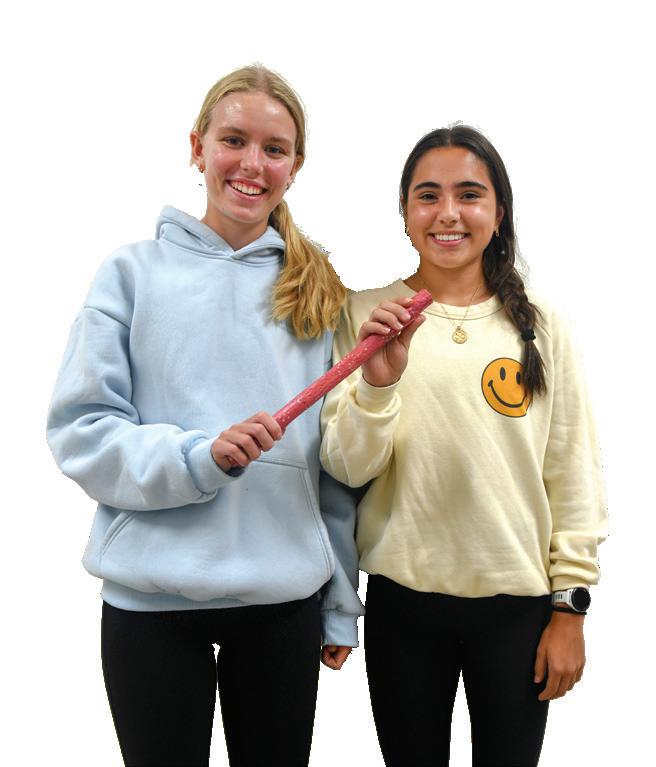


Senior Claire Langford braids hair in matching styles

Eating carbs before a meet

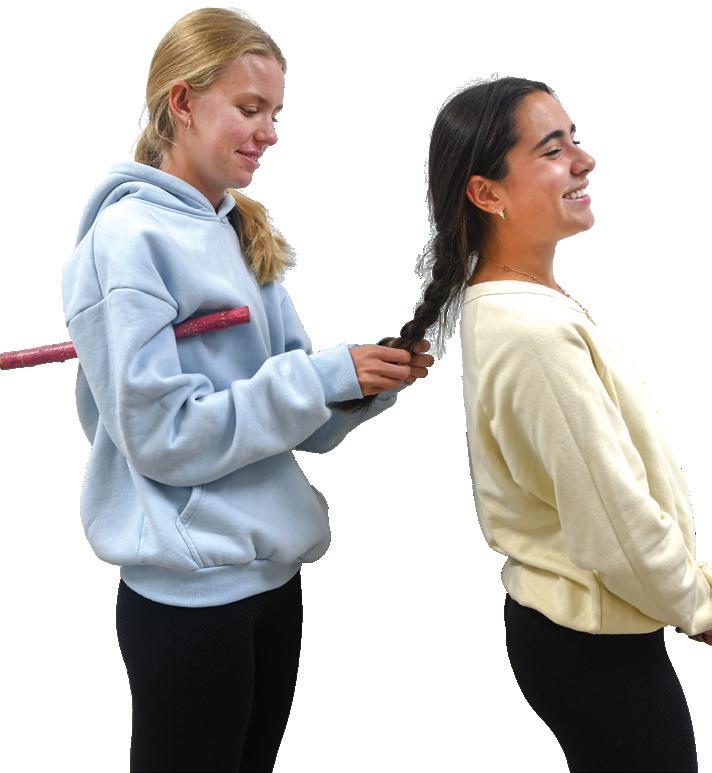

surrounded by hockey her whole life and has played
story by MYA SMITH
Elin
Guenther dragged her skates as she made her way into her first ice hockey practice. Guenther didn’t like anything about it. Everything from practice, to being on a team, Guenther despised.
It wasn’t until she got the hang of passing the puck around and blocking shots that she truly grew to appreciate it. After she played in her first real game, her motivation for the sport finally developed. Now Guenther has been playing for 12 years.
“It was our first game of the season where I started to learn to love it,” Guenther said. “I got a breakaway, which is just where you’re skating on the ice and everybody else is behind you, and I scored. It was my first goal in [co-ed] hockey.”
Now-sophomore Guenther plays for the Kansas City Storm’s fourteen-plus girls team, but for every other year she’s played with girls and boys, making the experience unique for Guenther, since most teams are separated by gender.
Typically, most girls play on the girls and boys teams until they’re fourteen, then they can choose if they want to branch out into playing on girls only versus the girls and boys team, according to Guenther.
“I’m super close with the girls,” Guenther said. “Then with the right group of guys, it’s just a lot of fun, and I’ve played with the same group of boys for almost my entire career.”
This year, if girls are fourteen and over, they will only have the option to play for girls instead of getting to choose. This is a change for Guenther, because she’s used to playing with both genders.
“I like the speed of playing boys more just because it’s more physical and faster,” Guenther said.
One constant for her is the sisterhood of her team.
Her best friend on the team, sophomore Aubrey Hoagland, has been by Guenther’s side since 5th grade and has loved growing up together on the ice.Throughout their loaded practice schedule and tournaments, it’s uncommon for the two to be separated.
“There was this one Christmas practice and her mom had a video of us just dancing together,” Hoagland said. “It was the funniest thing ever. Everything’s memorable with her on the ice just being like line mates and stuff.”
This memory is just one of many of Guenther with her friends, and her favorite part of the sport is the close relationships she’s formed. Not only has Guenther been surrounded by a strong





Senior Hank Hunter introduces himself and explains why he brought in the other flag football coaches: seniors Davis Eakes and Jack Reeves
“Davis is probably one of the smartest players on the team. He’s more of a defensive guy, and I really don’t know defense a whole lot. I knew Davis was a nice guy and good with kids, so I thought he’d be good at coaching the defense.”
“Jack, I brought him in, kind of as an assistant to everyone, because he’s just an athlete. He’ll call offense when I’m not there. He can call defense when Davis isn’t there. He’s just kind of a Swiss army knife. And the kids really love having actual football players on their team.”
“I’ve been running the offense, so I’ll call the offensive plays and stuff, and I’ll make and design all the plays and stuff like that.”
BELOW Senior Davis Eakes gives one of the Coyotes advice after missing a tackle between plays.
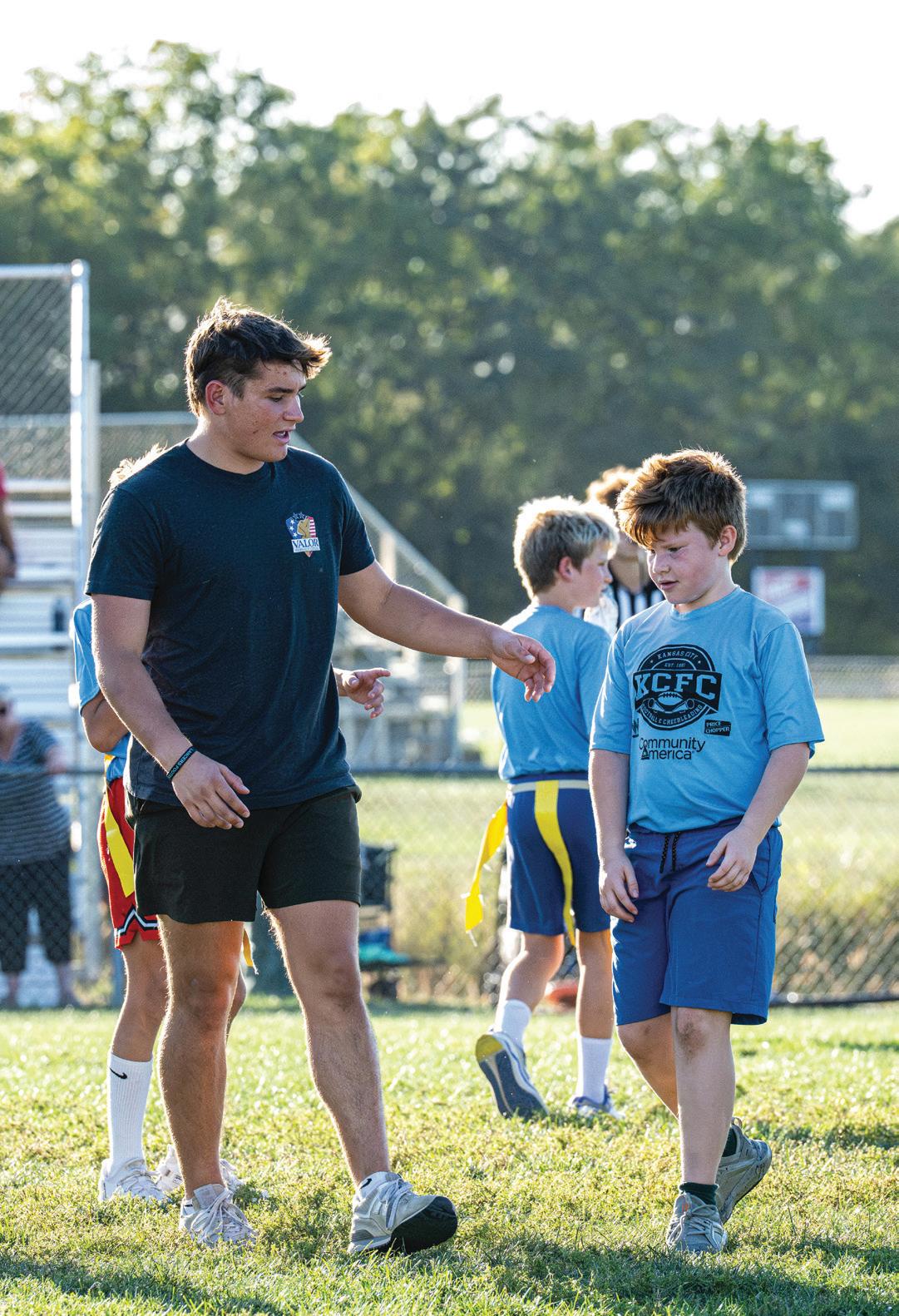
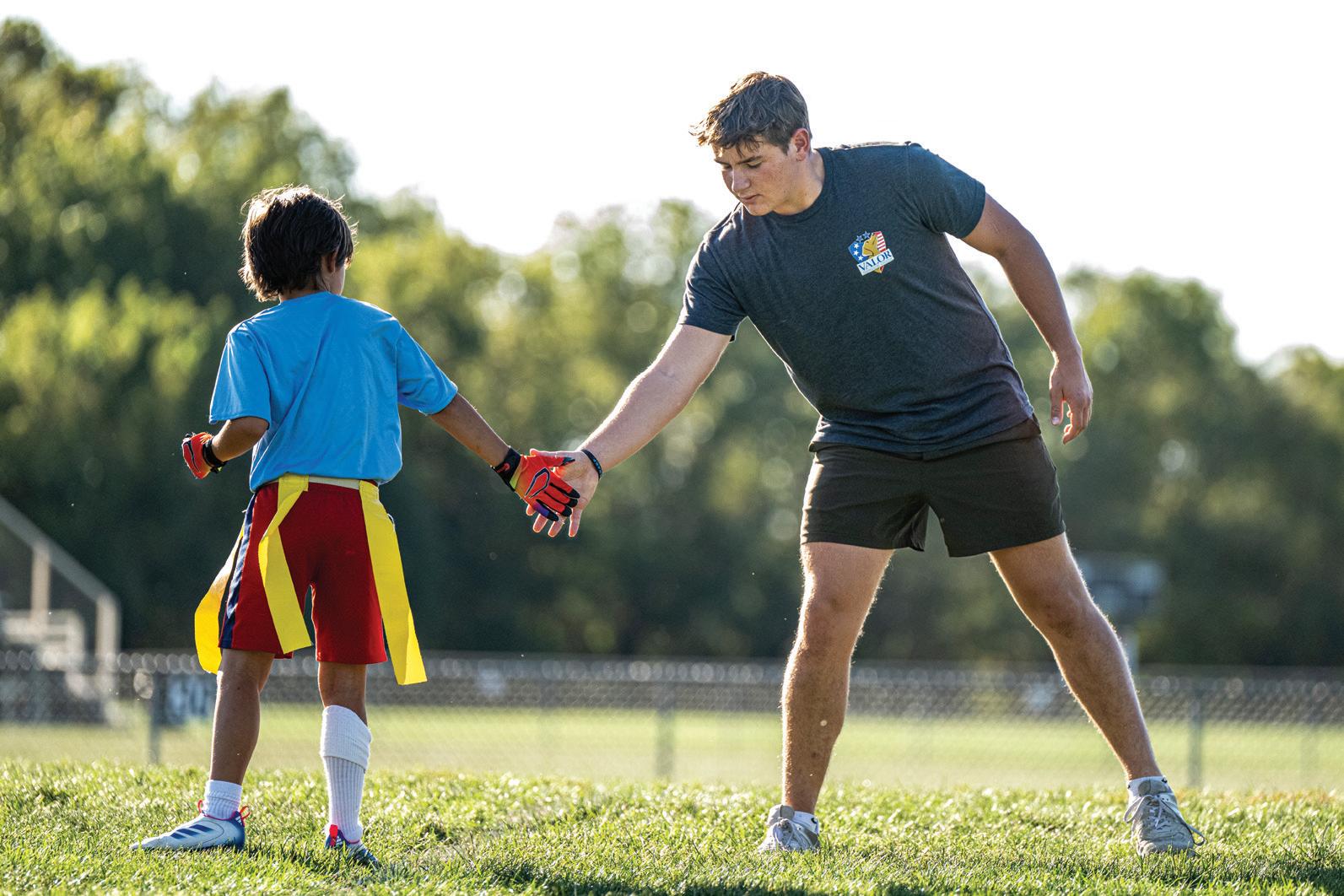
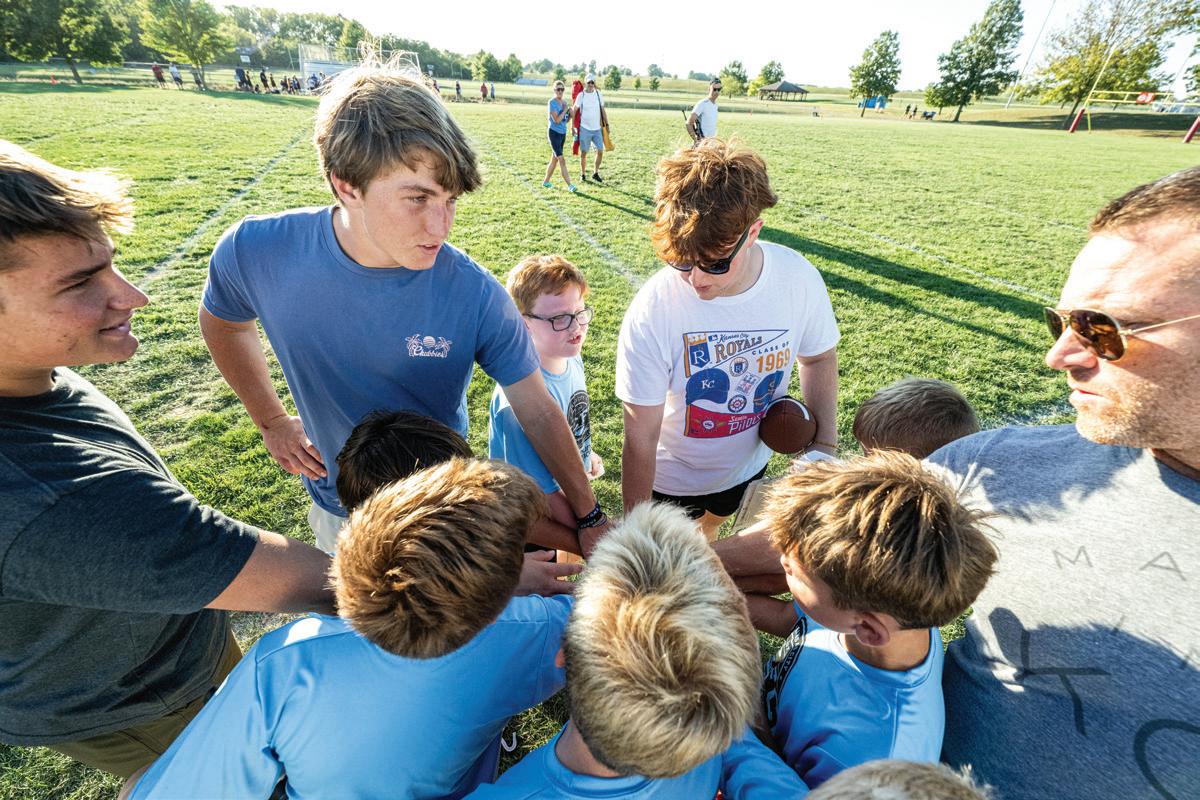
fives one of his players after they make a tackle on defense. Eakes goes onto the field while the team is on defense to call plays.

on three” after they won their playoff game.

BELOW One of the Coyotes players reaches out for a first down after getting their flags pulled on the Coyotes first drive of the game.
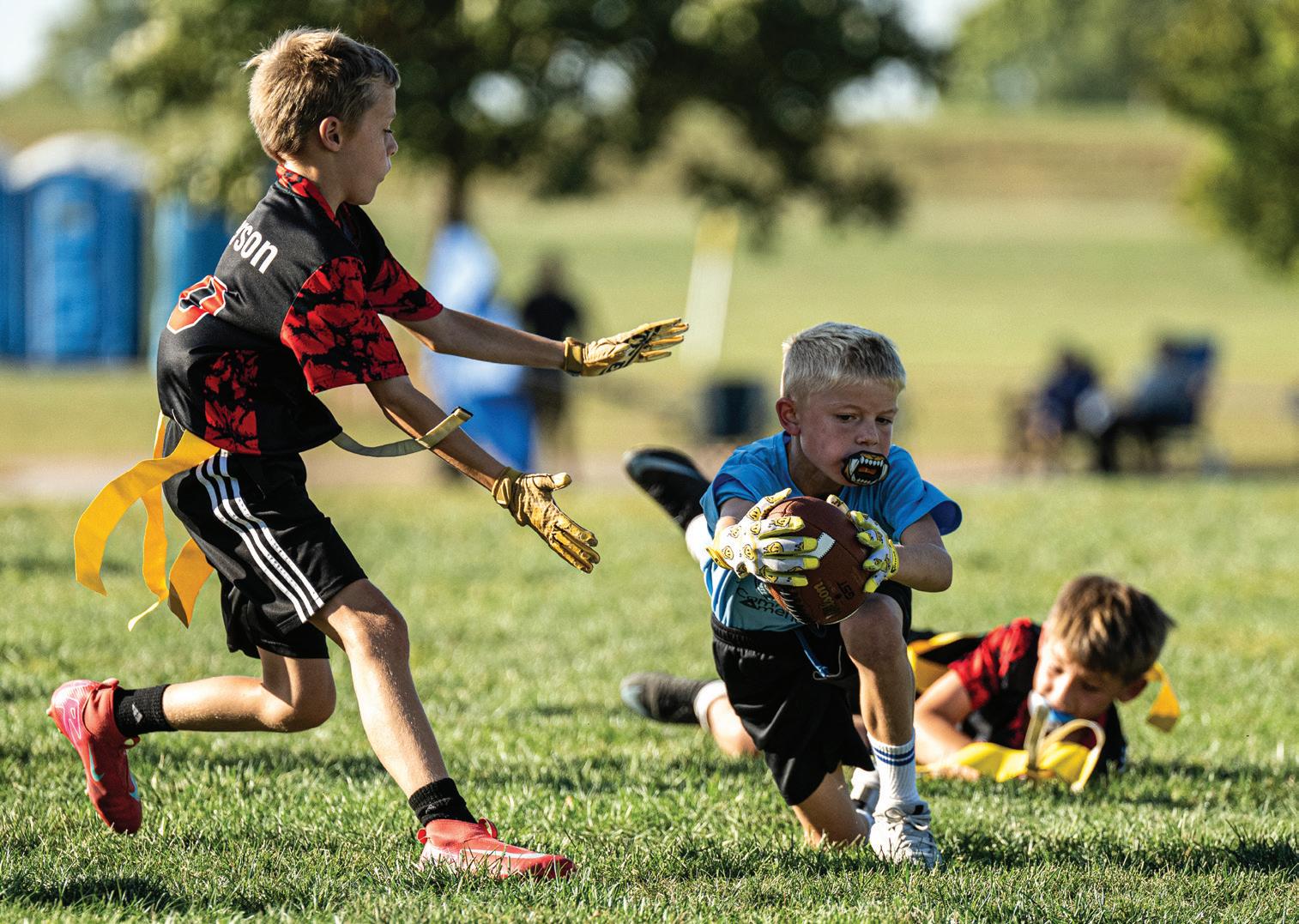
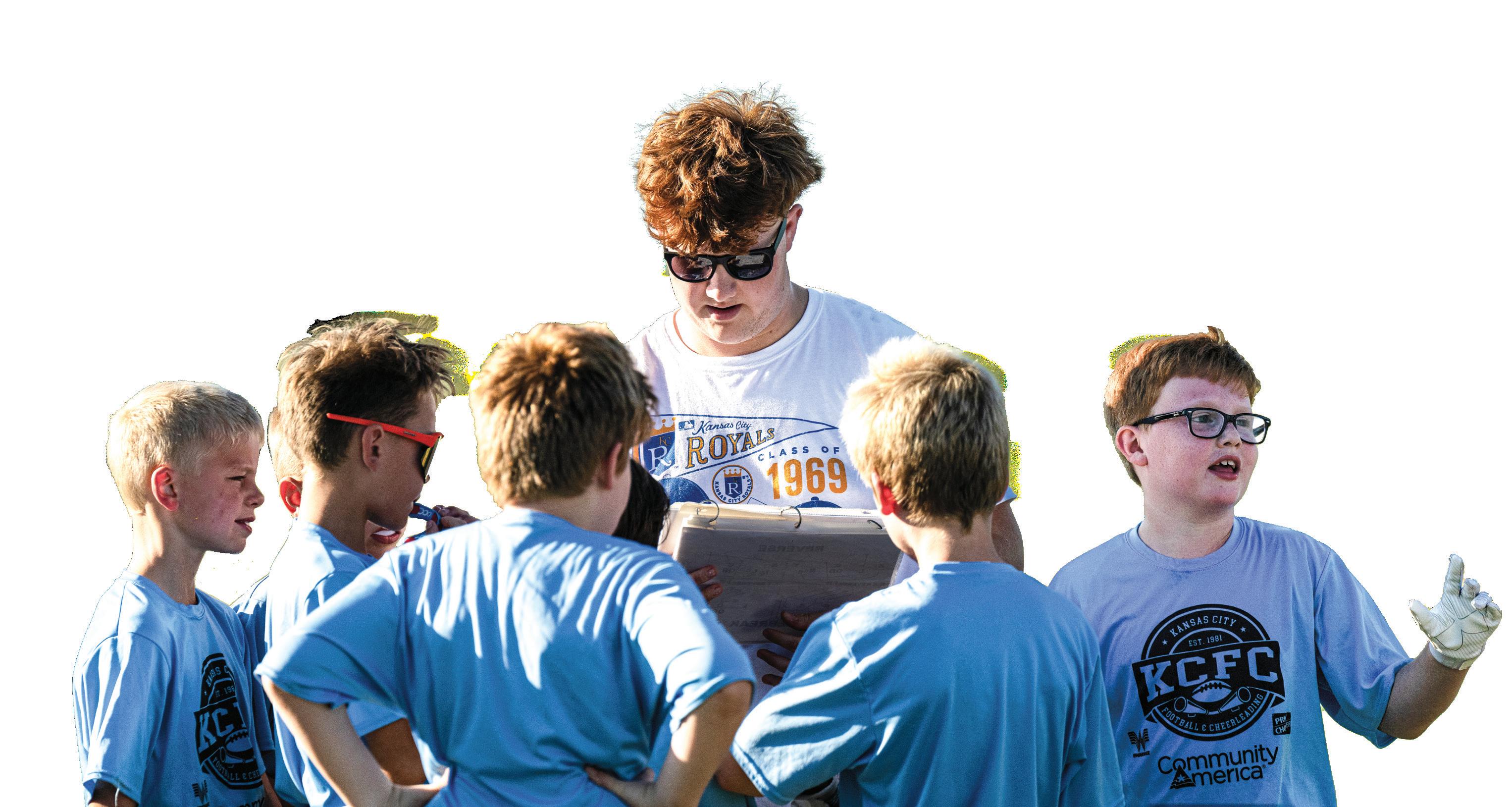
THE SOUND OF a whistle pierced the air.
“Huddle up!”
A group of fourth-grade boys sprinted towards seniors Hank Hunter and Jack Reeves as the two coaches kneeled on the turf field. It was the team’s weekly Wednesday night practice.
Hunter pulled out his clipboard and sketched out the offense’s next play. The five kids on offense stood in a tightly knit huddle around the two senior football players, whispering to ensure none of the defensive players could hear their next play in their scrimmage.
But the five defensive players weren’t listening; they were on the opposite side of the field, singing a song they learned that day in school — “Fifty Nifty United States” — with their defensive coach, senior Davis Eakes.
Three senior football players coach an elementary school flag football team, which serves as a way for them to inspire the future generation of SM East football
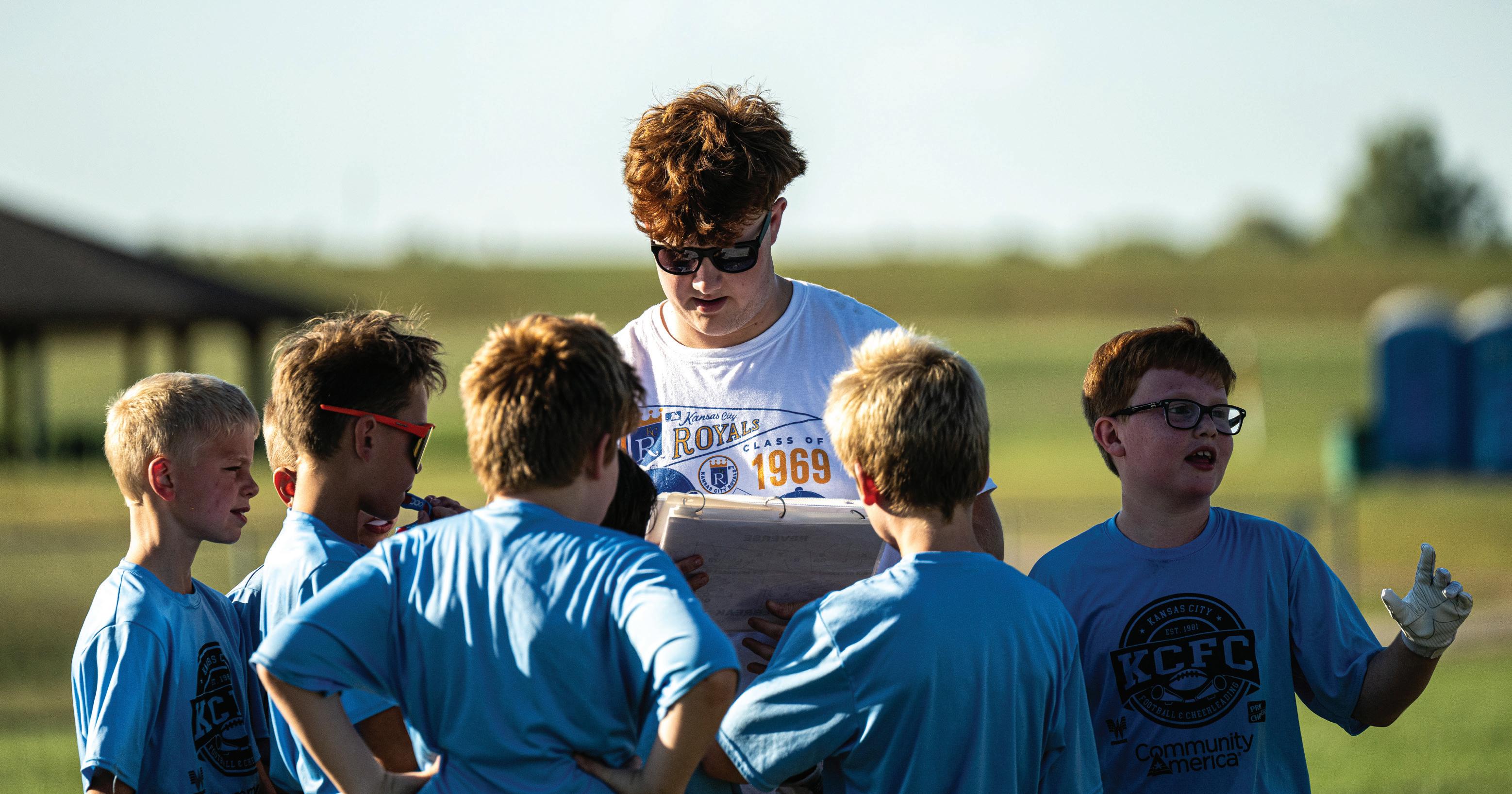
— Hunter, Reeves and Eakes — coach a team of 9 and 10-year-olds all from Westwood View Elementary School called the Coyotes. This experience not only serves as an opportunity for them to gain leadership skills but also a way for them to coach the next generation of SM East football players.
The 4-foot-tall quarterback yelled “Set, Hike!” and the play began. Each defender matched with an offensive player, a strategy they learned from Eakes. The quarterback spiraled the football across the field with the same form Reeves taught him and threw it to an offensive player who was able to find an open window, just as Hunter showed them.
THEY REALLY look up to us, which is great, and I think that they’re going to use the skills that they learn from us later in the future when they come play at East.
SENIOR JACK REEVES
As soon as the offense finalized their play, and the defense had wrapped up singing the final chorus of “Fifty-Nifty,” the ten boys lined up, all wearing the same yellow flag football belt.
The three varsity football starters
“They really look up to us, which is great,” Reeves said. “And I think that they’re going to use the skills that they learn from us later in the future when they come play at East.”
Hunter has been coaching the team consisting of his two little brothers and their friends for the past three years, alongside his dad.
Hunter needed assistance with defensive coaching. Hunter also says Reeves is a “Swiss army knife” of an athlete, someone who can help with offensive, defensive and quarterback coaching.
Most of the elementary teams they play against have dads who coach, which makes their teenage-coached team different from the others in the league.
“I’d say definitely all the kids have loved having [Eakes] and [Reeves] around,” Hunter said. “I think bringing them on has really made them better rather than just having a couple of dads who just kind of scheme up stuff and tell them where to go.”
The three try to incorporate varsity football strategies into the practices by doing formations similar to the ones Eakes, Reeves and Hunter do under the stadium lights on game days. They have even taught the Coyotes an NFL play — the Philly Special.
Despite the new high school coaches, the Coyotes hadn’t won a single game until their first playoff game on Oct. 5.
The Coyotes, as the kids call the team, were moved up to a more advanced league at Kansas City Football and Cheer this year, making the competition bigger than before — literally.
This year, Hunter’s dad decided to step down as head coach, which caused Hunter ask Eakes and Reeves to help him coach. According to Hunter, Eakes is one of the smartest defenders on the field and
“We faced some really big kids,” Hunter said. “I mean, some kids that just make our boys look like second graders.”
Though the opposing players can tower over some of the kids, Reeves says Coyotes
don’t quit, even in games when they don’t have a single point on the board. They continue to try and get touchdowns to keep the scores close.
Since September, the team has been practicing the plays and formations Eakes, Reeves and Hunter have been teaching them. And they finally paid off during the Coyotes’ first playoff game on Oct. 5. Despite having only seven players on the field and no subs at all, the team won 18-0, their first win all year.
“On defense, we pitched a shutout,” Eakes said. “We didn’t let the other team score. I give all the credit to the kids; they work hard.”
The whole team was thrilled, including the three coaches, Eakes said. All seven boys exchanged high-fives and hugs, jumping up and down eagerly.
To the coaches, the Coyotes’ success isn’t measured in how many flags the defense can pull or touchdowns the offense can get; it’s about the boys’ love for the sport.
“Seeing their love and their skill grow from when they started to now, it’s just like, been so much fun,” Hunter said. “They’re always wanting to play, and just getting to share the love and knowledge of football with them is just such a good time.”

An overview of three students’ celebrity encounters
CAMPBELL ALLDREDGE SENIOR
MY COUSINS, BROTHER and I were on the field, and we saw this little kid, and we were like, ‘Oh my gosh. That’s the rizzler.’ They were like, ‘Say something, Campbell, say something.’ He’s just a young kid, and you forget that. I just didn’t really realize that until I saw him, and he was really shy. He was so cute.
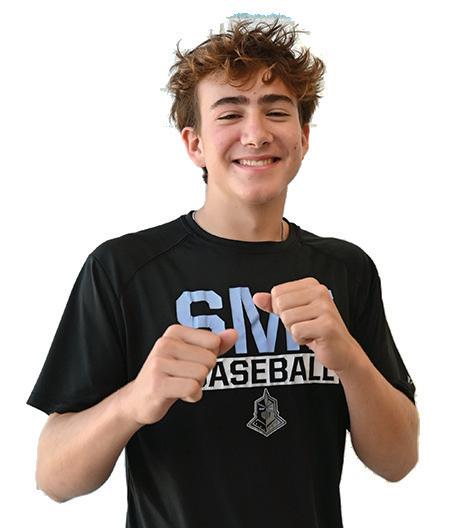
TV SHOW “COBRA KAI” ACTOR
At a Chief’s playoff game in February

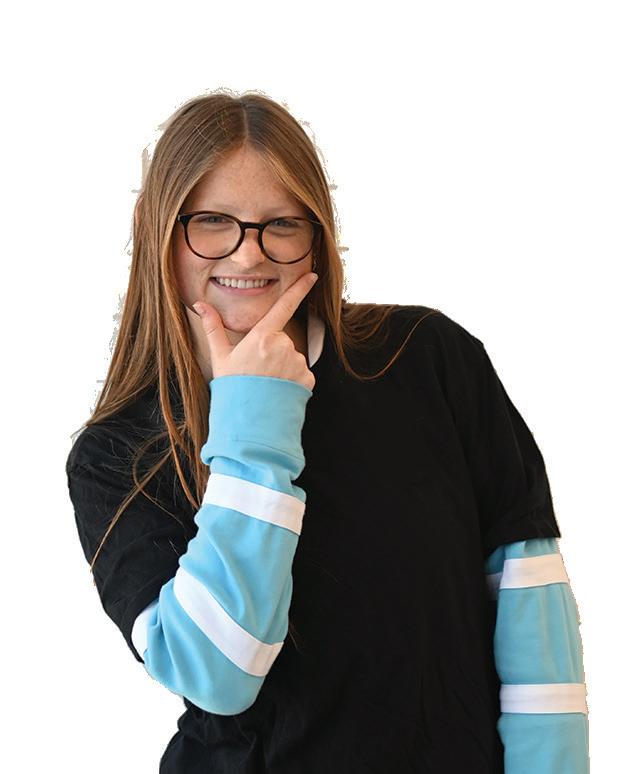
SOCIAL MEDIA PERSONALITY

At Planet Comicon — an annual pop culture convention — at the Kansas City Convention Center in 2020
OSCAR ORDONEZ JUNIOR
I THOUGHT IT was kind of weird seeing somebody who you know as a character in a show. In real life his personality was so different. After I met him, I thought, ‘Wow, he’s really nice in person and terrible in [the TV show] Cobra Kai.’
In New York at a pop-up store, created to celebrate Swift’s album “Lover” in 2019

NORA CARSON JUNIOR
I WAS A huge Swiftie at the time. I had been waiting in the merch line for one hour when the people behind me said, ‘Oh, Taylor Swift is gonna come out.’ I started crying as one does. Then I watched Swift’s documentary “Miss Americana” a few months later, and I was literally in it at the end in a five-second clip.

TAYLOR SWIFT
SINGER